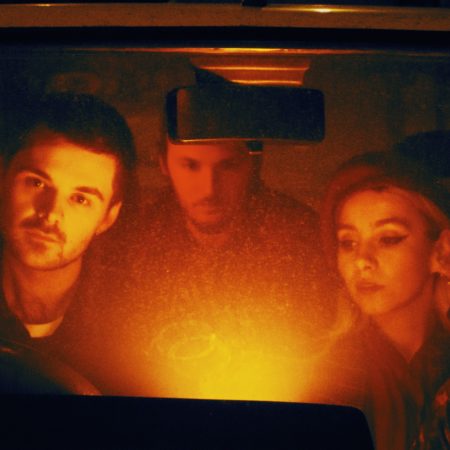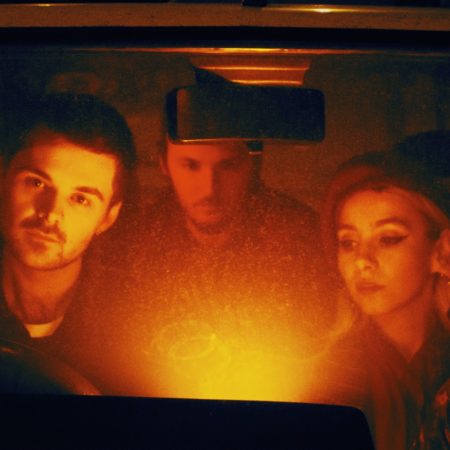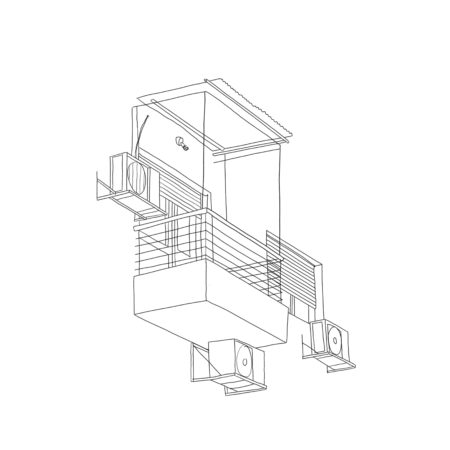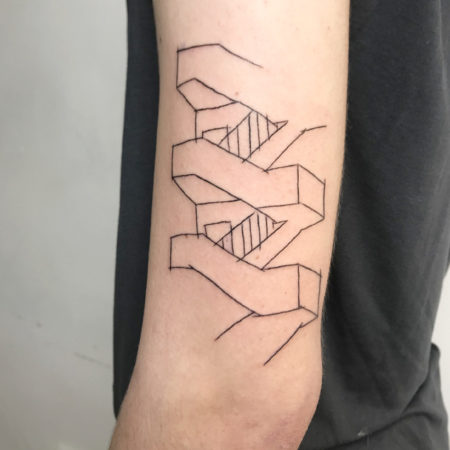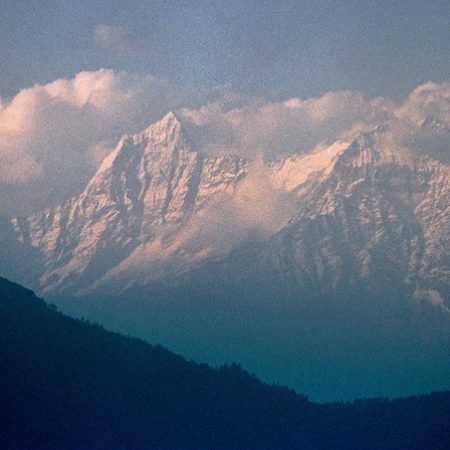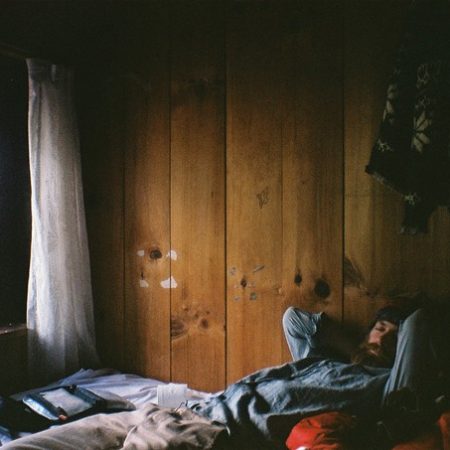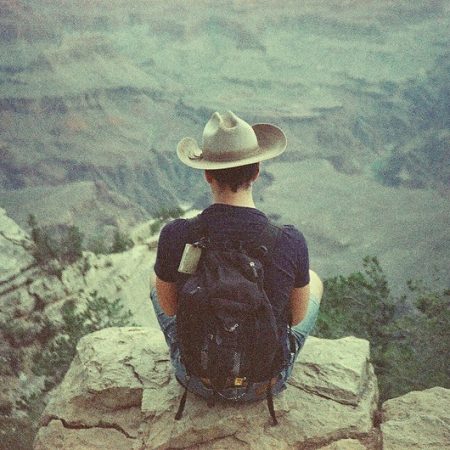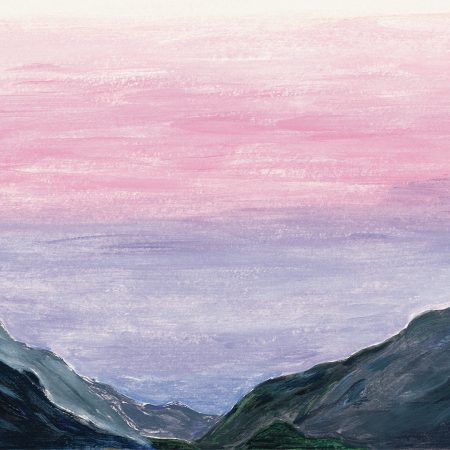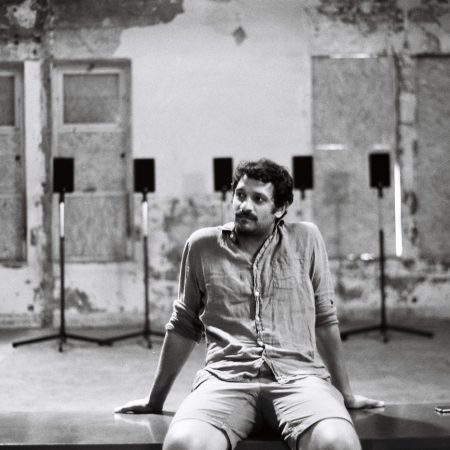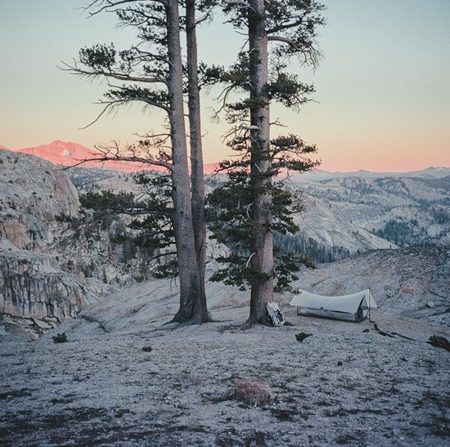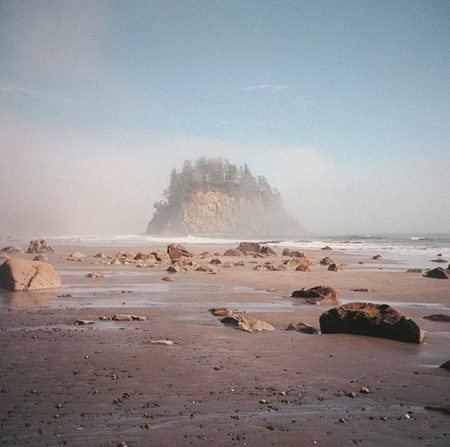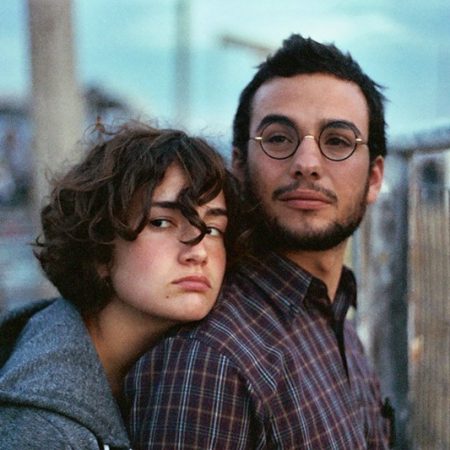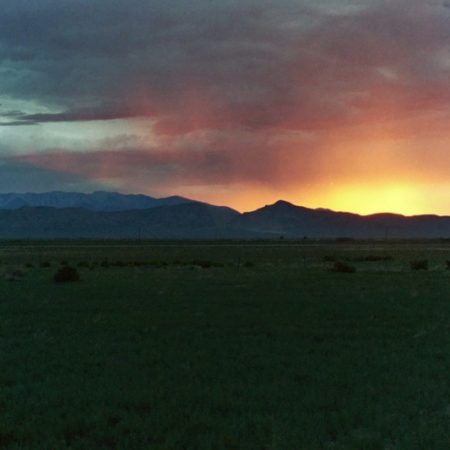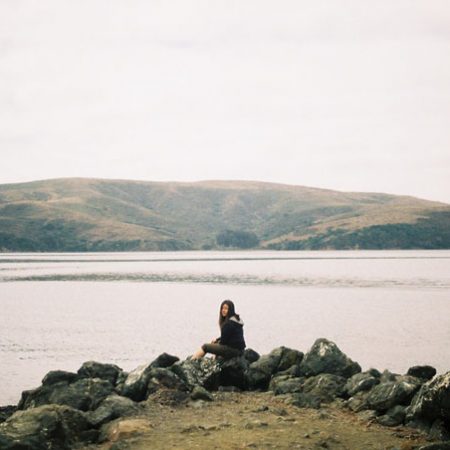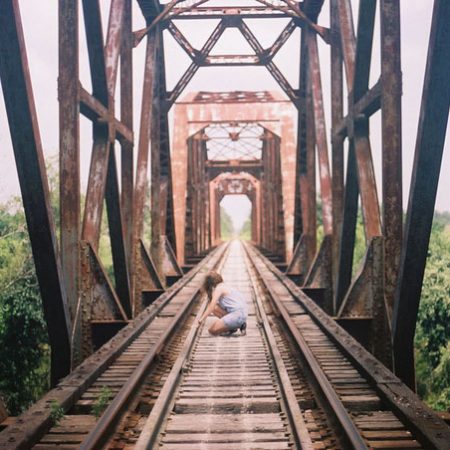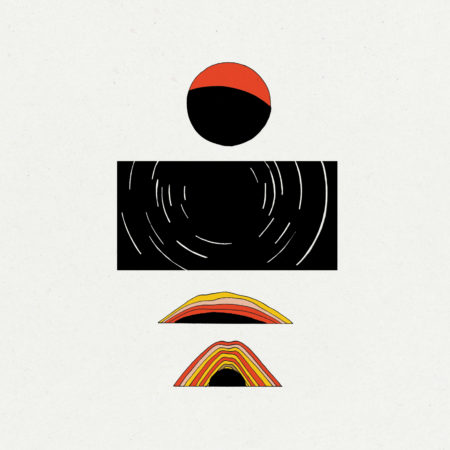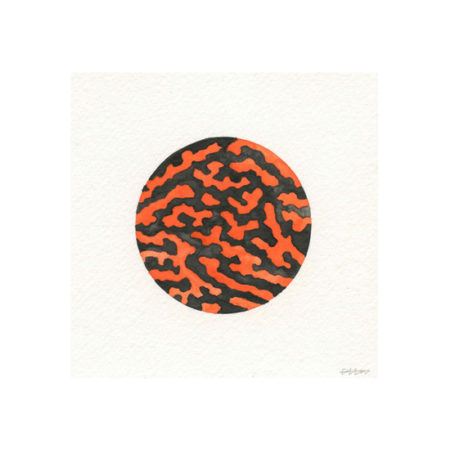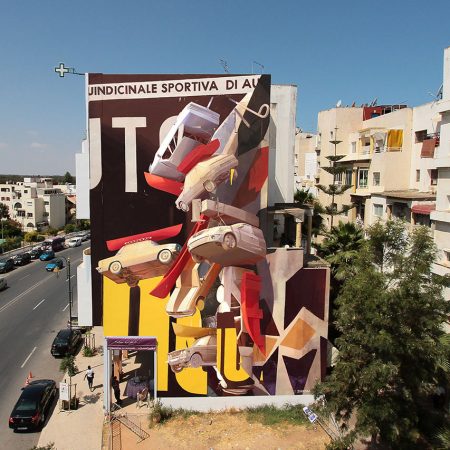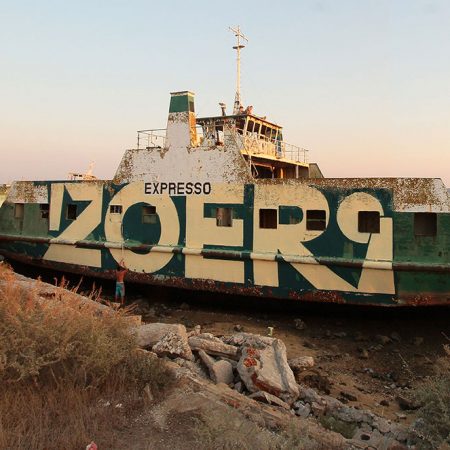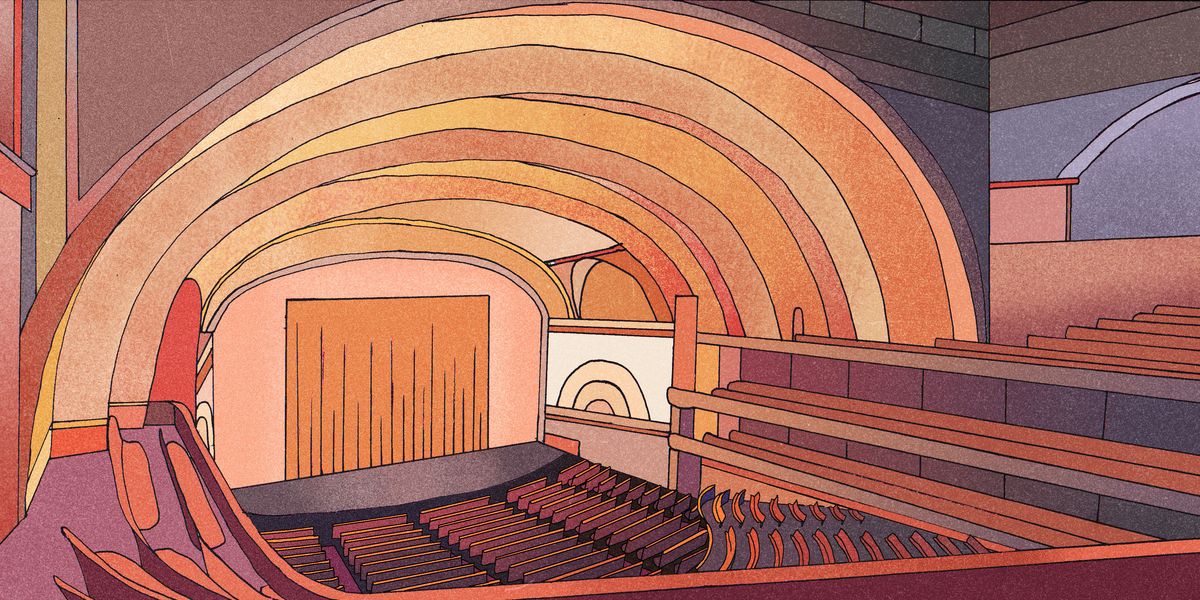
as if my life were a movie directed by a director I really like
Emma Roulette
ART . May 22nd, 2020Can you please give us a little intro about you?
Hi, I’m Emma! I have a background in entomology and scientific illustration, and now I do comics and editorial illustration.
What kind of illustrator are you?
I guess I’m the kind of illustrator that draws things realistically, with a black outline distinguishing all the elements. I’m the kind of illustrator that’s afraid to draw human faces with emotions. I’m the kind of illustrator that prefers the panoramic to the close-up.
What’s a good day for you?
One where I can enjoy the sunshine for a little bit, have some new ideas, learn something new, and work on something that can touch people. Mostly, it’s about having a poetic attention to everything, as if my life were a movie directed by a director I really like, where everything is significant and interesting. If I can maintain this throughout the whole day, then it’s a good day.
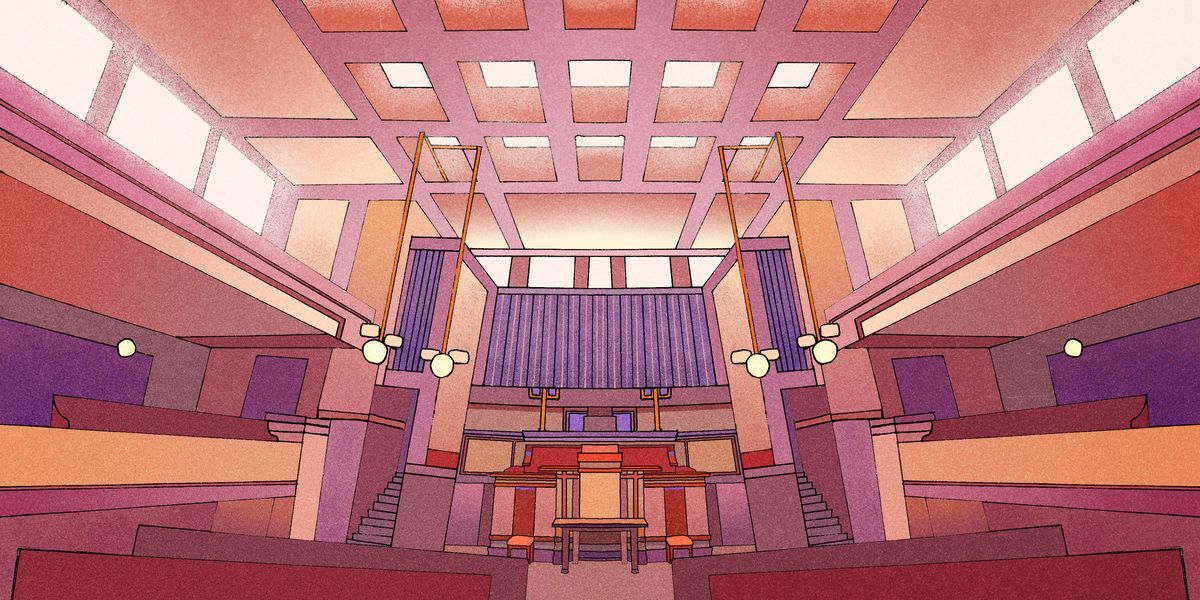
Where do you live and where did you live?
I currently live in Barcelona and I am from South Florida. I also lived in Gainesville, Florida for 5 years, a year in Madrid, and some months in NYC, Angouleme, and Santorini.
I think living in Florida really inspired my interest in nature, forests, animals, etc. But architecture– Well, I was living in Santorini one summer and working at a bookshop there. I became fascinated with the juxtaposition of really old, decaying, “historical monuments” with old decaying “regular buildings”. Like you would see a fortress or temple that is hundreds of years old sitting right next to a half-finished building under construction that’s only 10 years old. I went back to Crete a few months later to investigate.
I also really like when scenes are full of detail, like the view of rooftops and balconies of a city, full of different shapes and elements. It is like a jungle in that way.
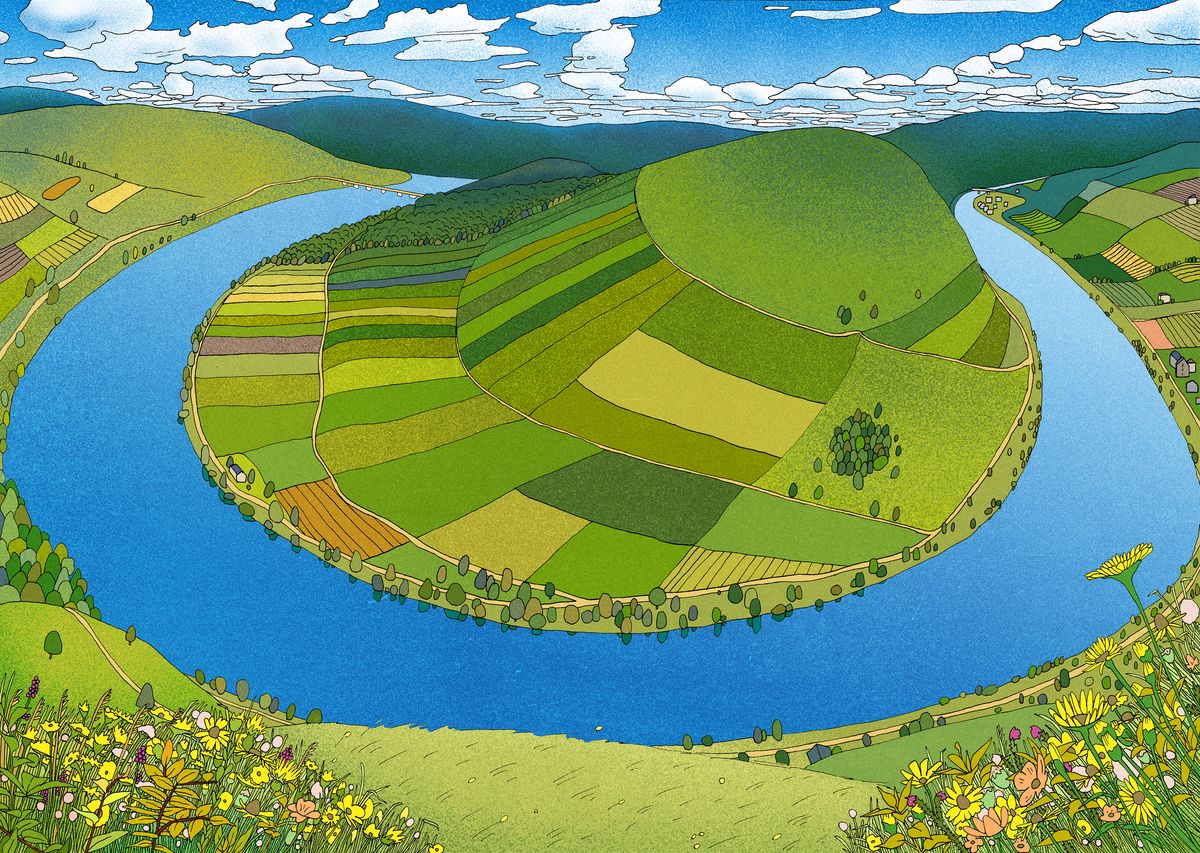
Where does your interest in architecture and perspective come from?
Liam Cobb’s work got me really interested in architecture. He’s the best! I saw how repetitive, angular lines and a profound sense of perspective can really take the viewer out of an otherwise flat 2D world of illustration.
What are you working on at the moment?
I’m working on:
– writing every day
– Some illustration commissions
– a larger comic about my parents and Florida
– learning japanese
Oh why?
Now that I’m in lockdown, I have a bit more time to work on a long-term thing… It’s something I’ve always wanted to do because there is so much Japanese music I listen to, films I love, and art that I’m inspired by.
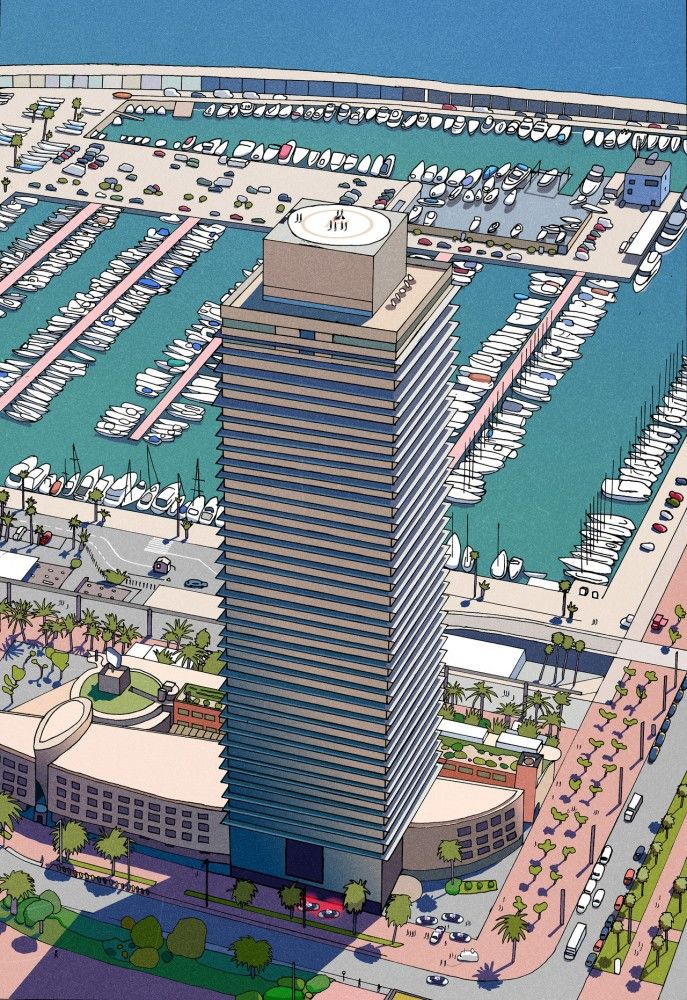
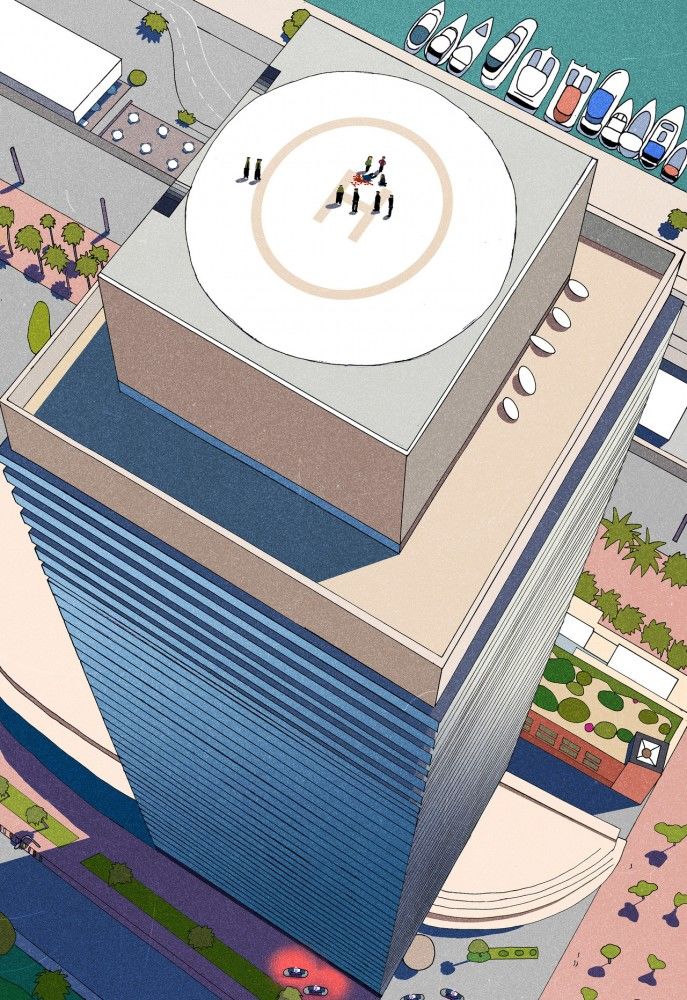
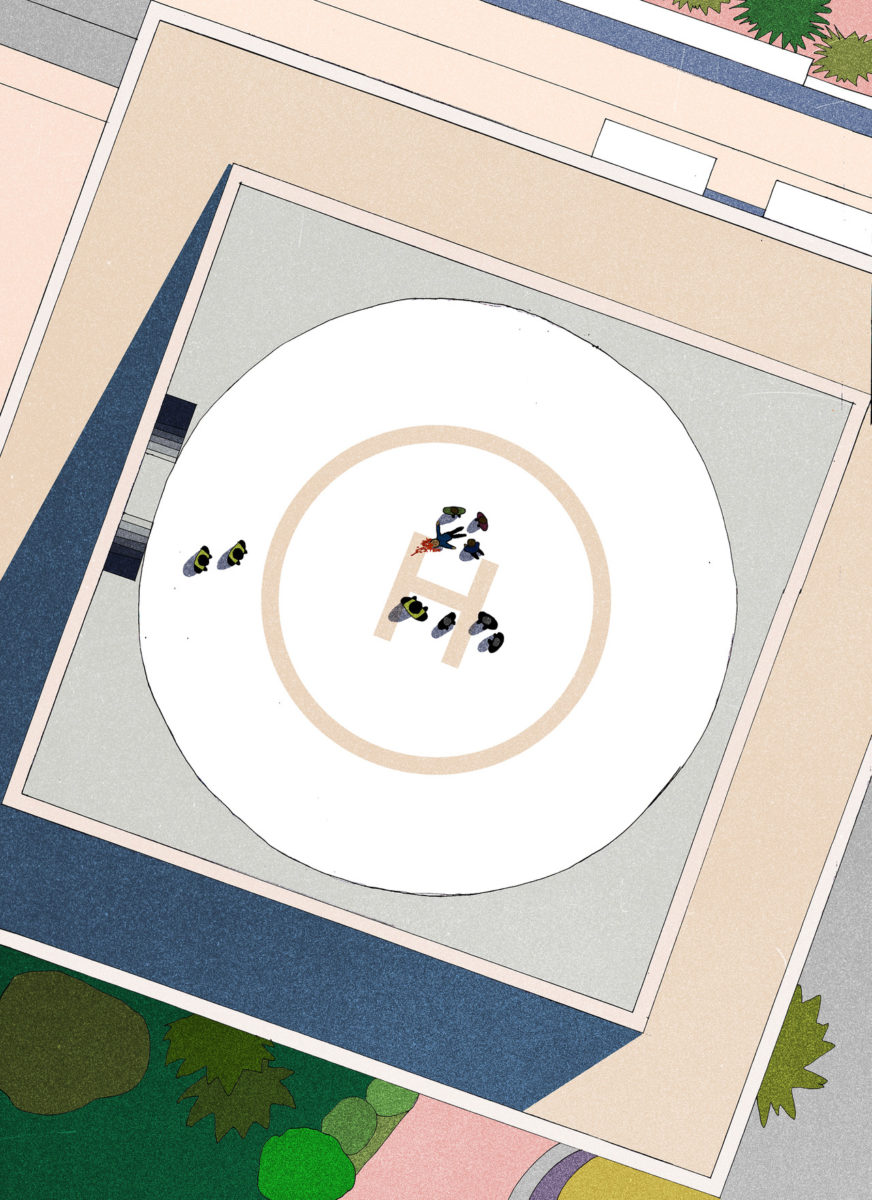
What about your process?
I usually start by making lots of concept sketches to figure out how I want everything to be on the page, and let some mistakes guide me. During this time I’ll also gather tons of reference images to try to create a mental algorithm for drawing something on my own. I’ll make lots of little sketches in my notebook to figure out how I want to represent certain things. Then I will draw the exact dimensions of the illustration on a piece of scrap paper, and in pencil work out how I want the final drawing to be. When I’m more or less satisfied with that, I use a light table to draw the finished drawing in pen on a piece of bristol. (I haven’t had access to a light table these days because I’ve been in quarantine, so I’ve been using a window and sunlight as my light table)
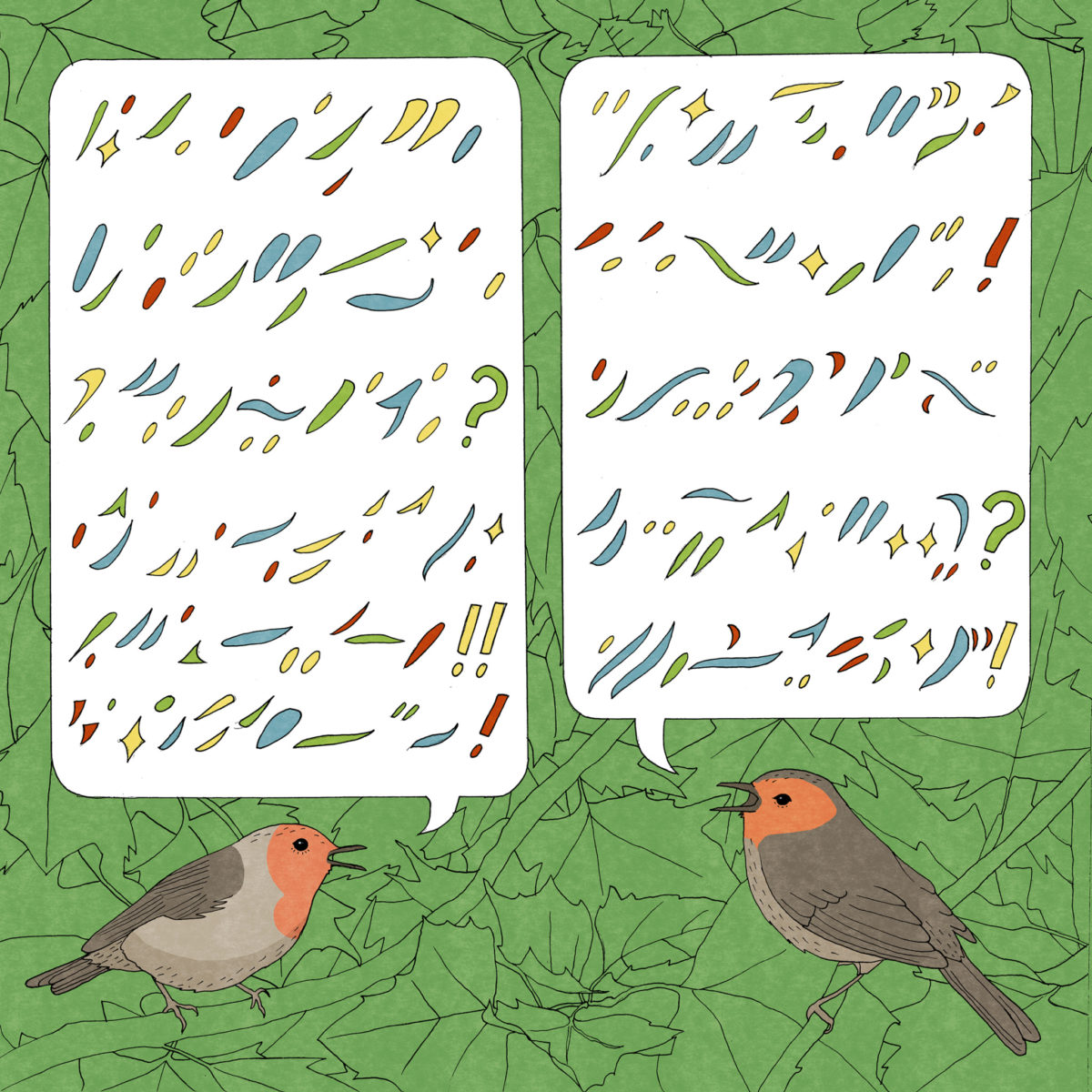
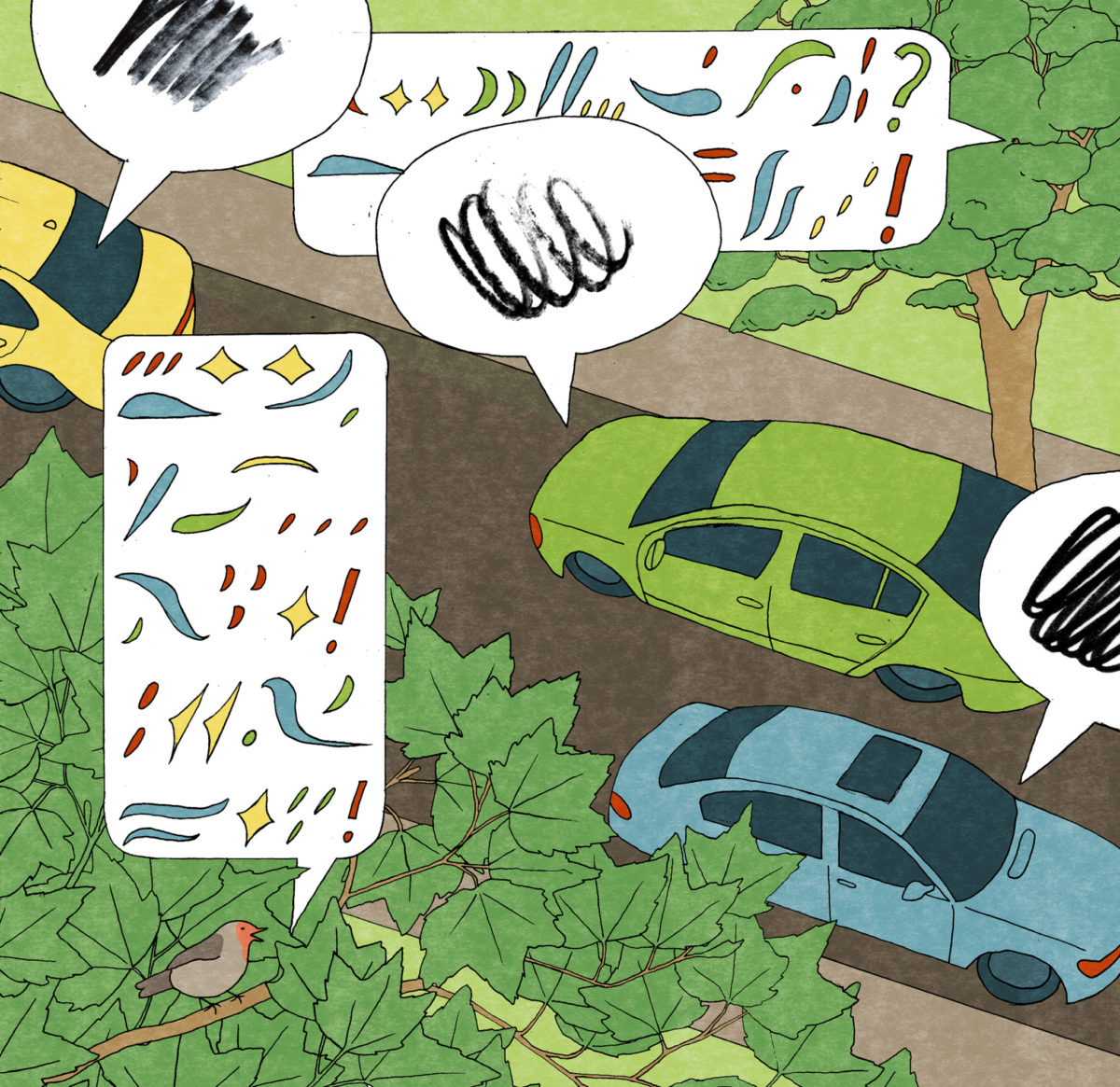
If it’s architectural, sometimes I will take a specific reference photo and then overlay a perspective grid on top of it in photoshop. Then I will draw the same perspective grid onto an A3 paper, and then use the grid to help me sketch the architectural elements correctly. Sometimes I will use the perspective grid to invent new buildings
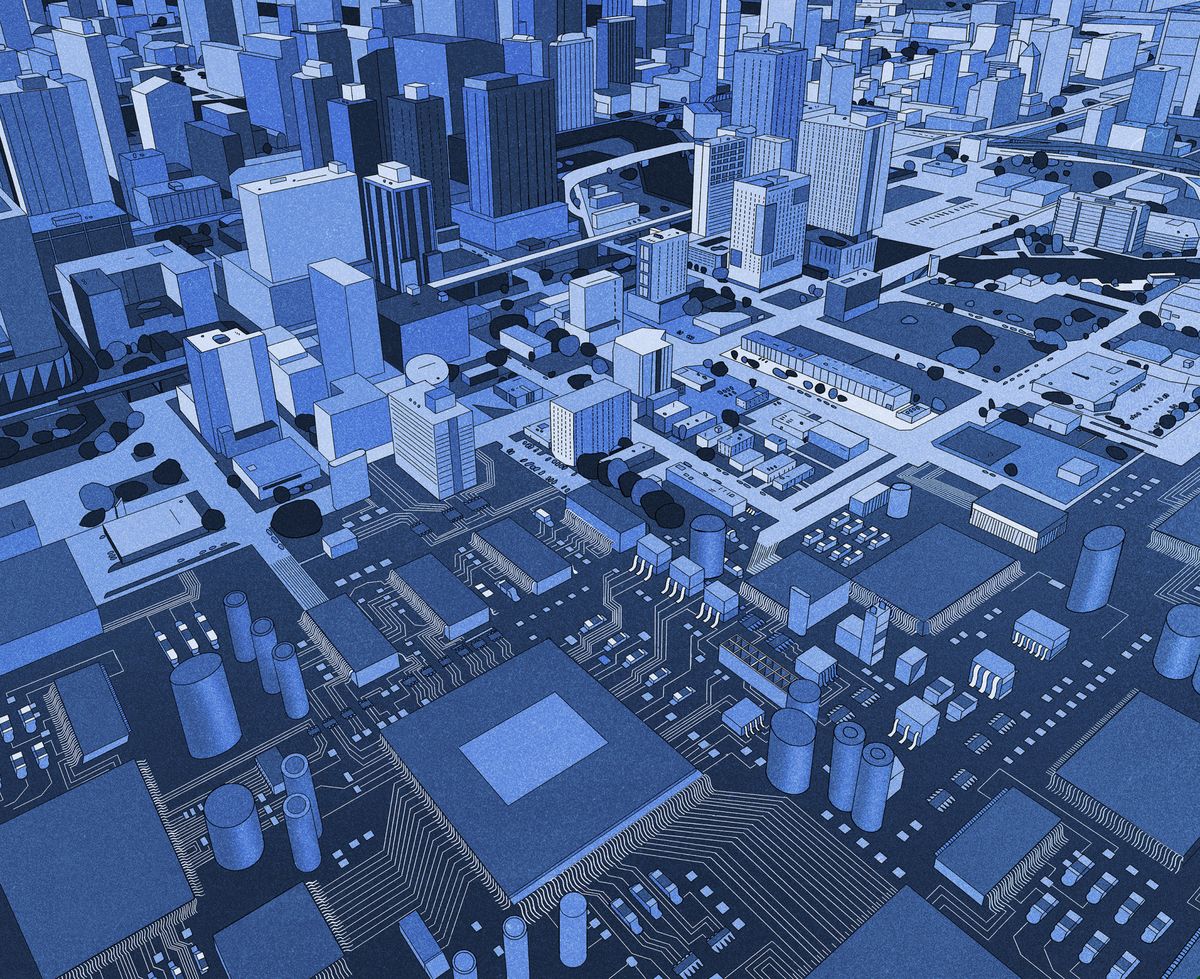
You went from using shades of blue, to using very bright primary colors, and now your work is more made pastel tones and various shades… Can you tell us about how your color palette evolves?
The whole blue period was because I was just trying to come out of black and white and use some color to make my drawings more interesting. But I was very nervous to use color because I would just end up experimenting for infinity. So I just chose one color, blue, because it’s the only color with the most chromatic range. Like, there’s so much difference between blue at 100% opacity and blue at 10% opacity, compared to yellow for example, which has a much smaller range.
Then, primary colors— that’s me 100% being influenced by Cristina Daura. She’s awesome!!
Then I started experimenting with watercolor for the first time in a looong time and came across some really cool, dirty, vibrant colors, like this mustardy yellow and muddy blue and I just thought that it might be cool to “dirty the palate” but in photoshop.
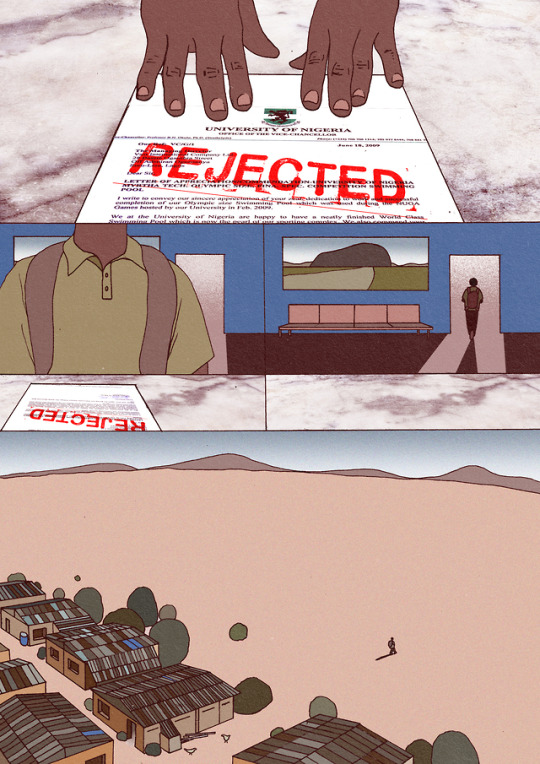
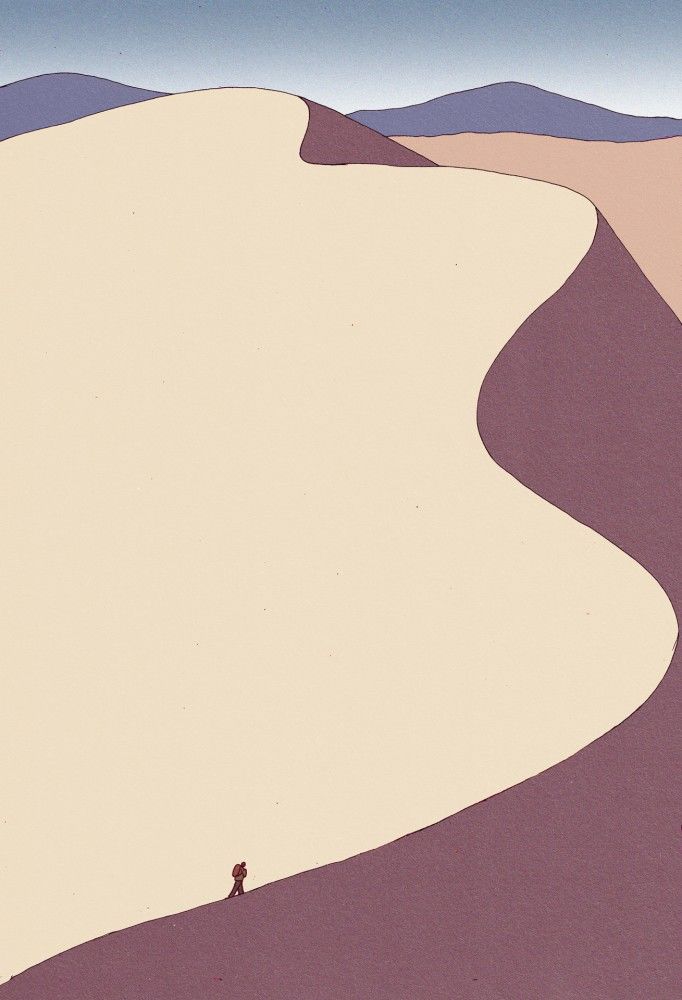
Can you tell us about your comic about Sani Ladan?
Sure! I was actually doing an internship with the CCOO which is the largest trade union in Spain. They were raising money to build a school in Kenya and they were creating an anthology of comics as a gift to the donors. The theme of the anthology was north/south. I thought about a video I had seen of Sani Ladan speaking about his experiences immigrating from Cameroon to Spain. It really impacted me and I wanted his experiences to be the backbone of the comic. He spoke about crossing the Sahara before reaching Morocco, and having to leave behind a friend there. It’s a part of the immigration crisis that doesn’t get enough attention.
I also included a reference to The Tragedy of Tarajal. This is when, in 2014, a wave of between 200 to 300 people, mostly from subsaharan Africa, tried swim past the border between Morocco and Ceuta, Spain. The Spanish Civil Guard fired rubber bullets at the swimmers in an attempt to force them to turn back. Fourteen of them drowned and 23 were sent back to Morocco after being detained once on Spanish soil. (read more here)
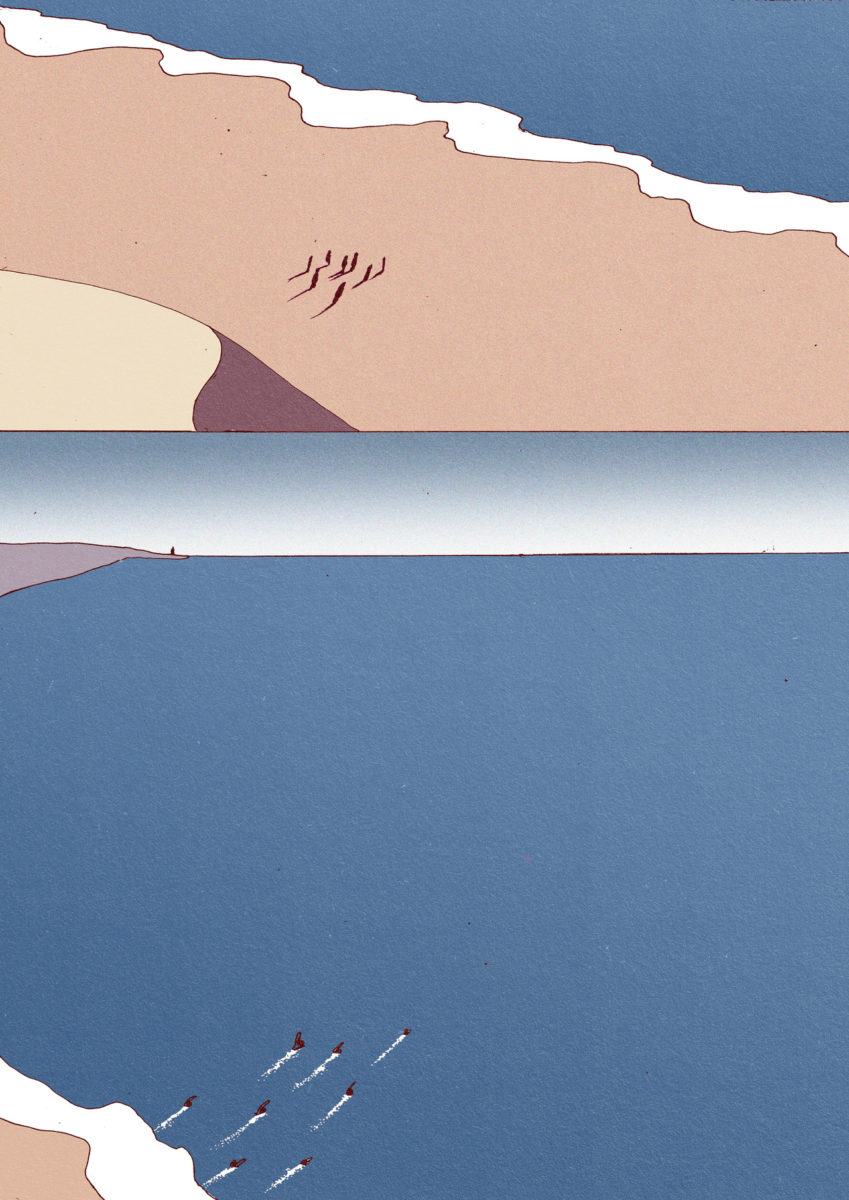
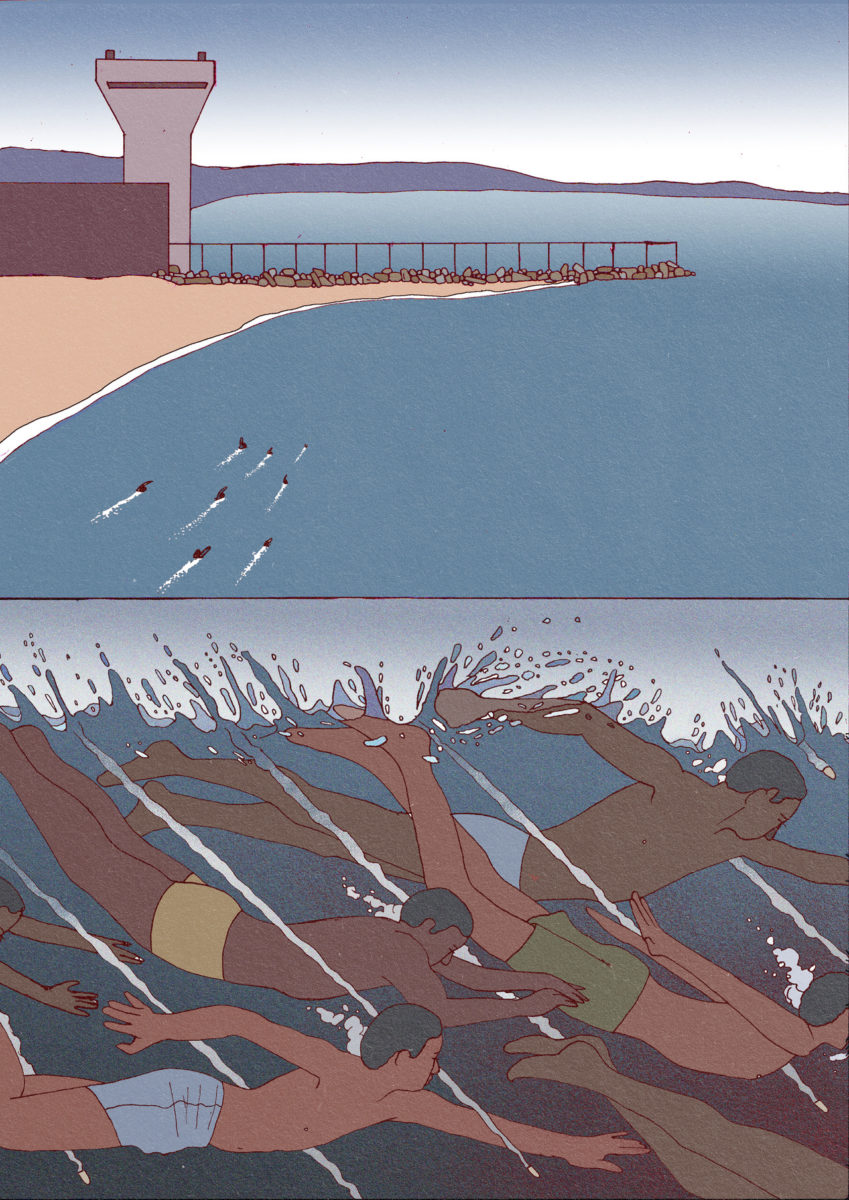
So, I released the comic, posted it on the internet, and somehow Sani Ladan himself actually found out about it, and e-mailed me. I sent him the full thing and I suddenly felt very very weird about it. Who am I to be making a comic about someone else’s experiences? I’ve never had to flee Boko Haram, or travel across the Sahara, or anything like that. I felt kind of embarrassed. Sani told me he was happy that someone was bringing these things to light and spreading his story, which made me feel slightly relieved… But then– he asked me what part of Cameroon I was from?? ? I had to clear that up and say that I was from Florida, to which he responded basically, Oh, ok.
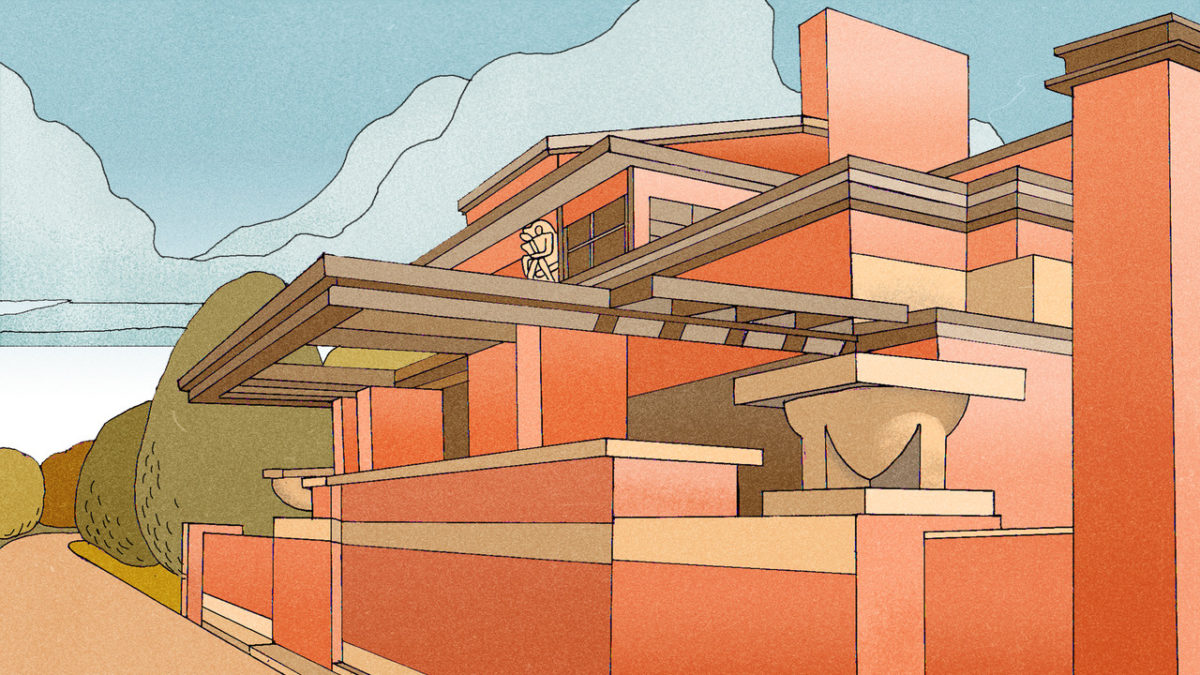
Can you tell us about your zine “This is what a feminist looks like” ?
I originally did this comic for Fanzine Bulbasaur, a feminist zine based in Barcelona. They asked me to make something about feminism. I kept thinking about different topics that I could explore but I couldn’t think of any personal experiences that I wanted to share, and I also didn’t want to sound preachy, especially since the people who would be reading my comic would probably be other feminists.
I was thinking about feminism as an ideology and how it can be consumed/produced to construct an “identity”. Like when people do things because they want to be a feminist instead of help women. Of course, promoting the concept of feminism in the world, even if it’s just saying “I am a feminist” is probably better than doing nothing at all, because it’s making the idea more popular and accepted. But when that statement comes at the expense of actual women elsewhere in the world, is it really better?
The whole point of the comic is to ask this type of question. Who is really being helped when someone wears a shirt that promotes feminism but was also made by real women working in absolutely terrible conditions? I watched a documentary called The True Cost that really put it into perspective just how big of a problem the global textile industry is. I really recommend this doc. Basically, there are a LOT of women working in the global textile industry, and a LOT of them experience absolutely terrible working conditions. And a LOT of people continuing to buy clothes that support the whole supply chain.
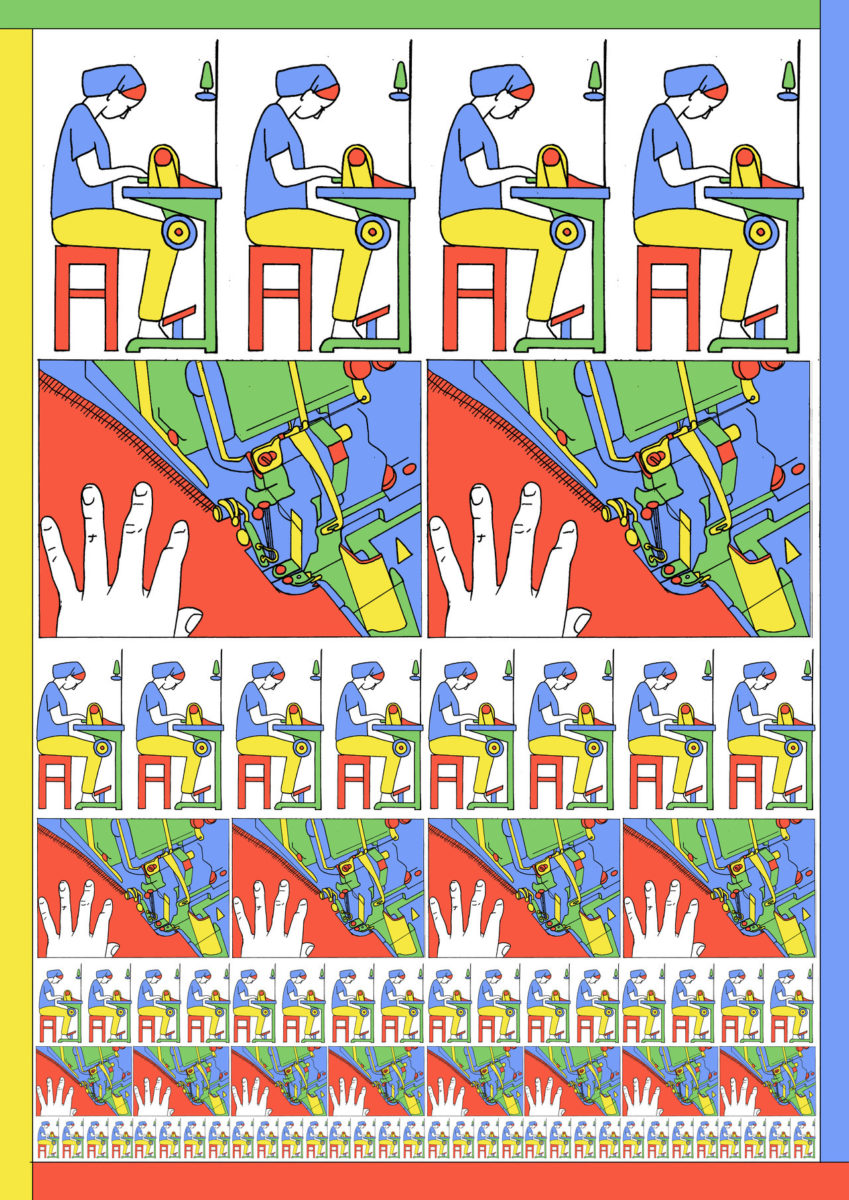
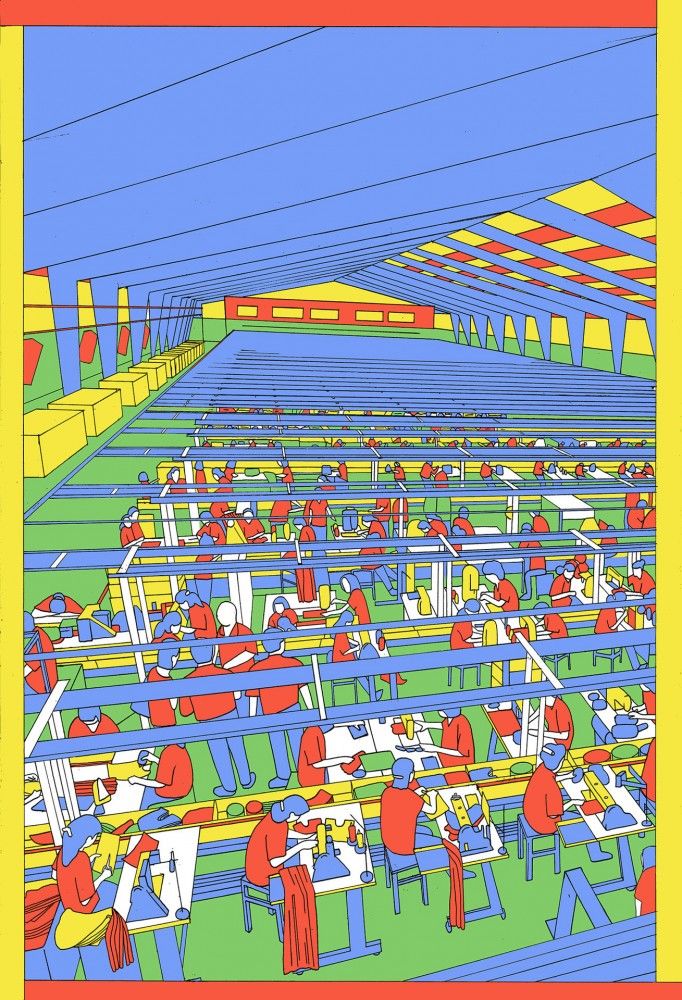
Here is an excerpt from this zine:
About 75 million people are employed in the garment industry worldwide. 75% of those people are women. Some of the top textile and garment exporting countries such as Bangladesh, Cambodia, China, Ethiopia, India, Indonesia, Pakistan, Thailand, Turkey, and Vietnam, ALL COMMONLY experience inhumane working conditions.
Some examples:
Gender-based violence, abuse, and sexual assault
Punishment for using the bathroom too frequently or too long
Extremely long working days (up to 14 hours)
Low pay
Forced overtime
No sick leave
No pregnancy leave
Excessive standing
Repetitive, boring labor
Child labor
Dangerously high decibels of surrounding machinery that can lead to hearing loss
Bosses keep passports and other identification from migrant workers
Many women, especially migrant workers, travel to the factory to stay there for months at a time, living in shared rooms and are punished for leaving.
No childcare, many women are forced to take their children to work, or leave them in their home which may be in a different city or country
Exposure to chemicals and particulate matter which can cause lung disease
Underrepresented in leadership
Unsafe buildings (See Rana plaza building collapse, 2013, which killed over 1,000 people, most of them women)
So okay I’m making a point that on a certain level it’s really hypocritical to wear a shirt like that says “This is What a Feminist Looks Like” because you’re contributing to the suffering of women at the expense of trying to convince everybody that you’re cool and political.
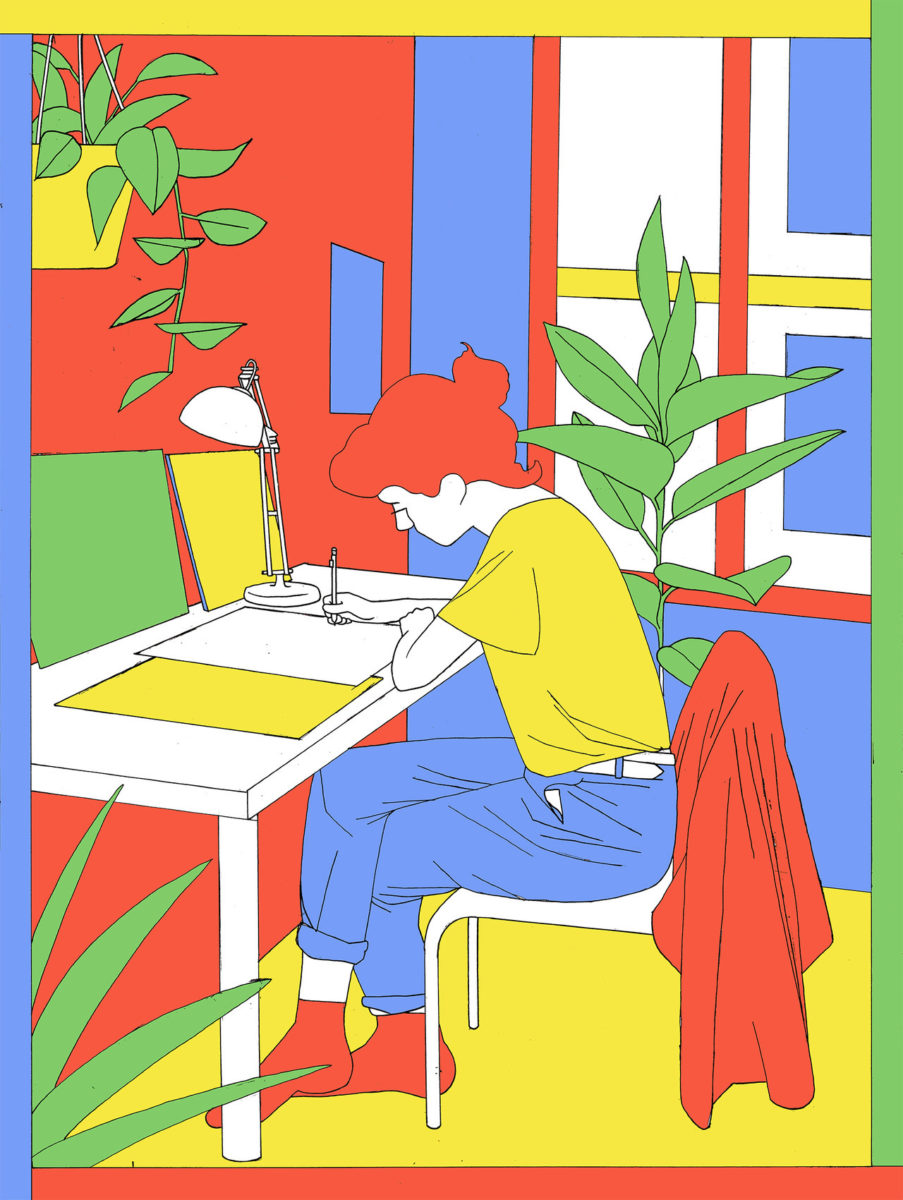
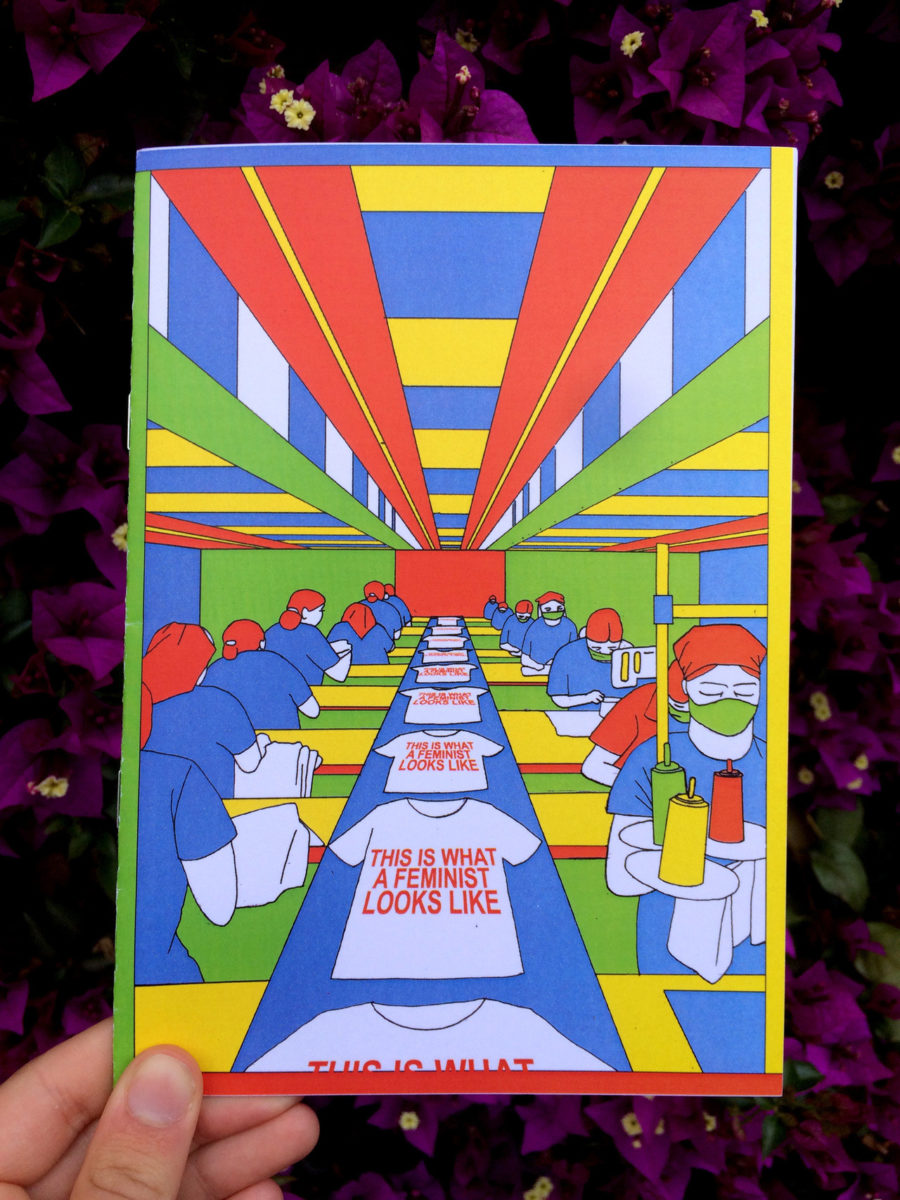
On the last page of the comic there’s a picture of me, drawing the comic, with hearts floating out of my phone next to me as I’m drawing. How much is making this comic just another form of constructing a feminist identity and avoiding the real work of helping actual women?
How are your photography and you illustration work connected/related?
I like to take photos of spaces, settings, landscapes, and buildings. I think this is mainly the focus of my illustration work, too. I think that photography can capture a certain sense of mystery and darkness that I haven’t gotten to yet with illustration. So much of it all still seems trendy or childish.
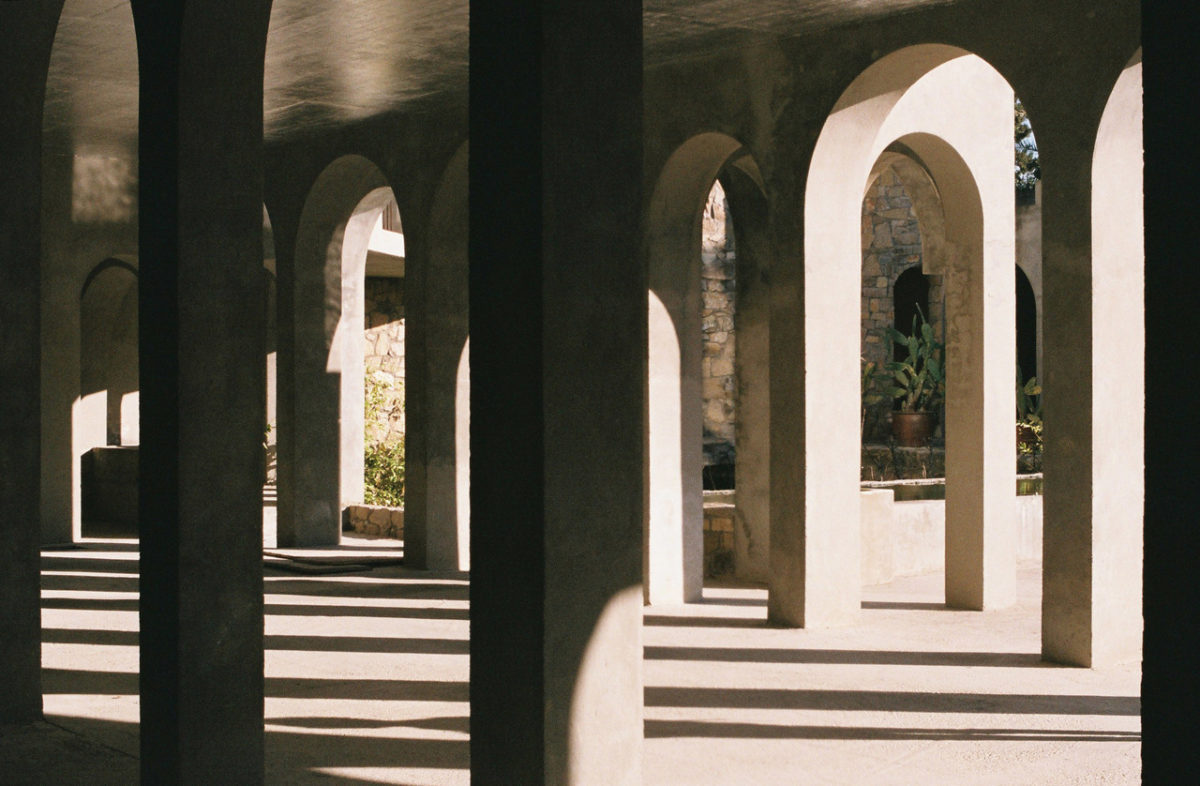
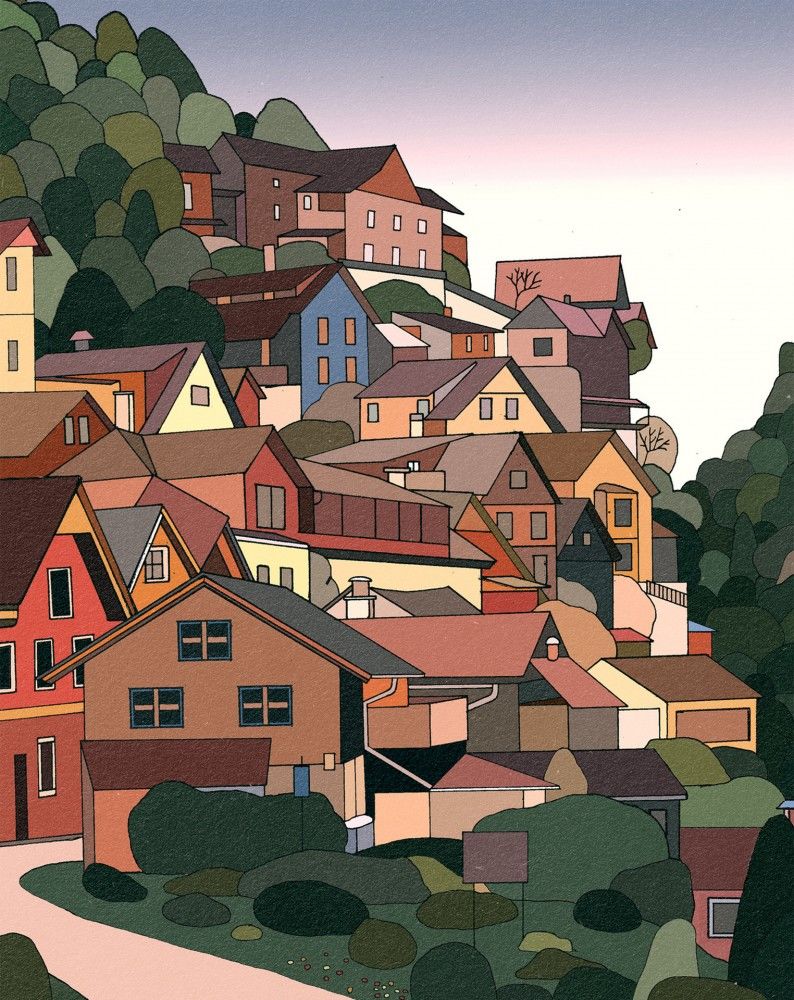
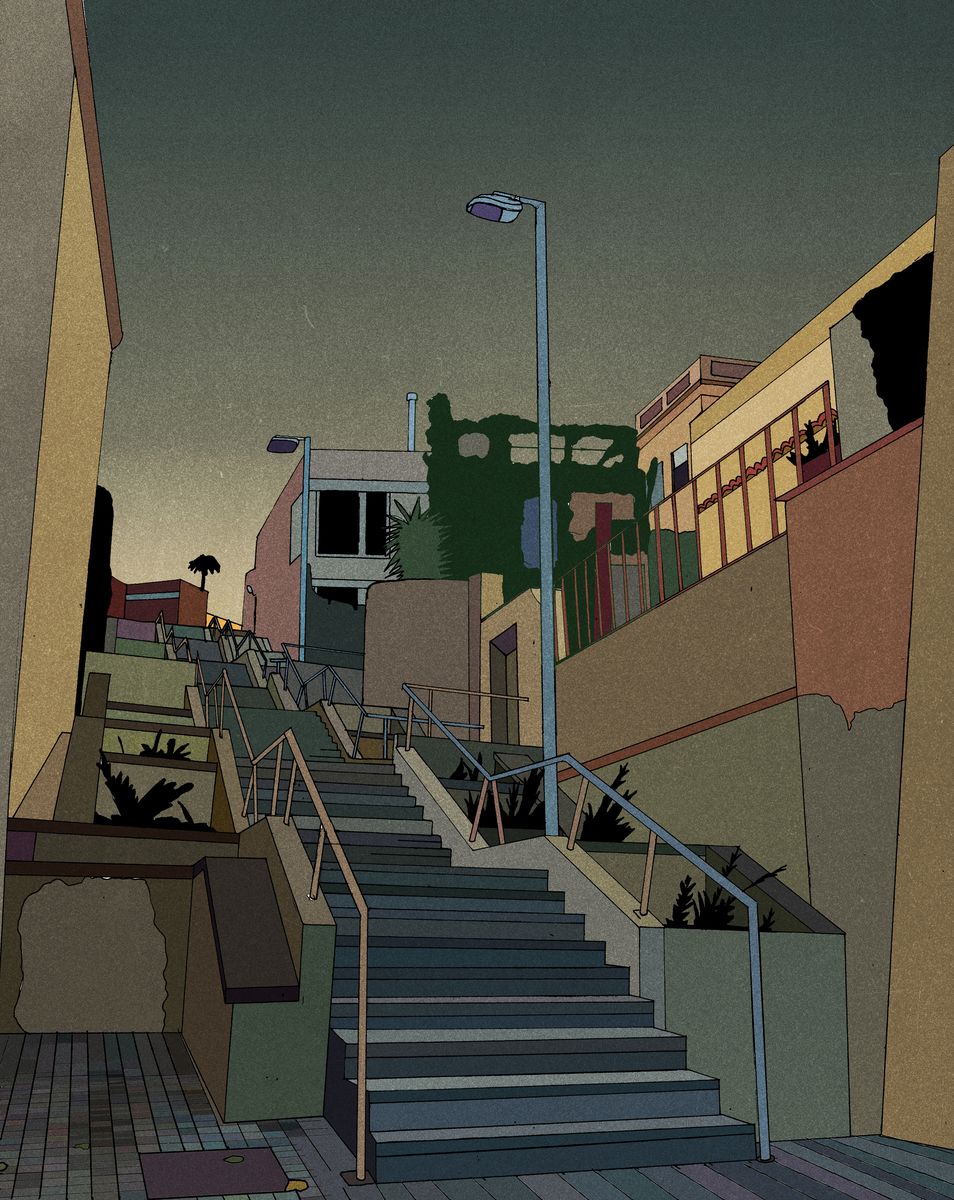
To finish, can you share with us the work of some artists that inspire you?
I really don’t look at that much photography, but I have to say that I truly love Ella Webb’s photography. She takes a lot of photos of landscapes, mountains. I just get this sublime feeling whenever I look at her photos, like this dark mysterious clarity of being on an Earth. It’s so hard to grasp, I don’t fully know why I like it, which is why I like it even more. Her drawings are also so, so good, too.
Other artists (in no particular order)
- Maria Medem
- Conxita Herrero
- Begoña García Alén
- Andrés Magán
- Cynthia Alfonso
- Oscar Raña
- Liam Cobb
- Pat Perry
- Ilya Milstein
- Lala Alpert
- Cat Sims
- Olivier Shrauwen
- Sara Hagale
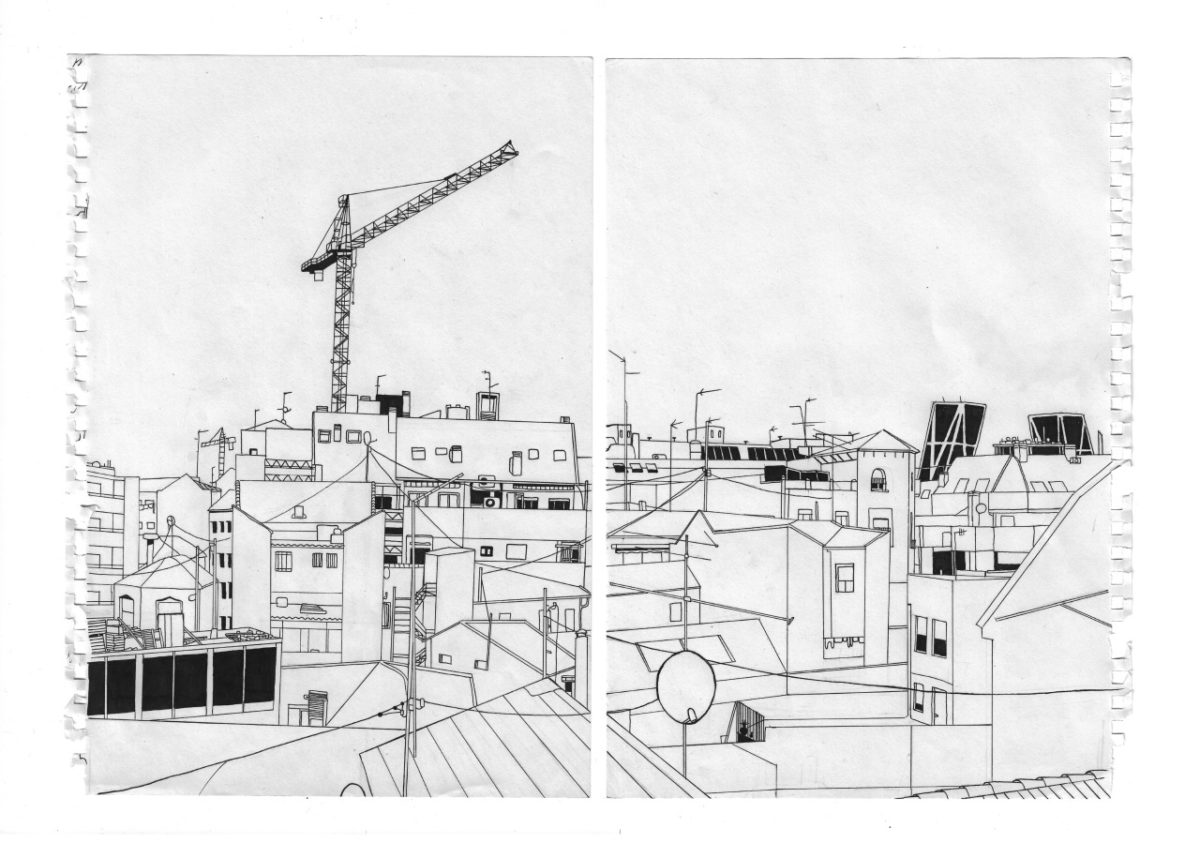
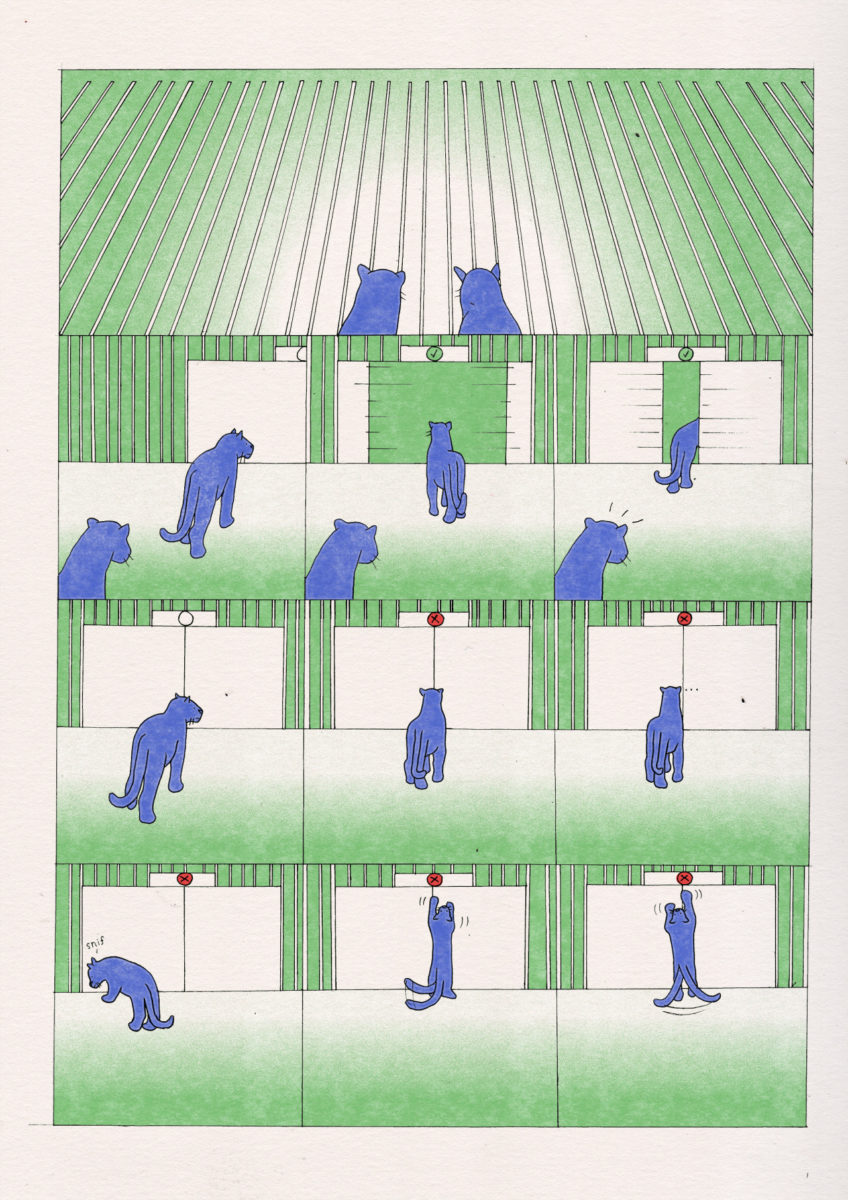
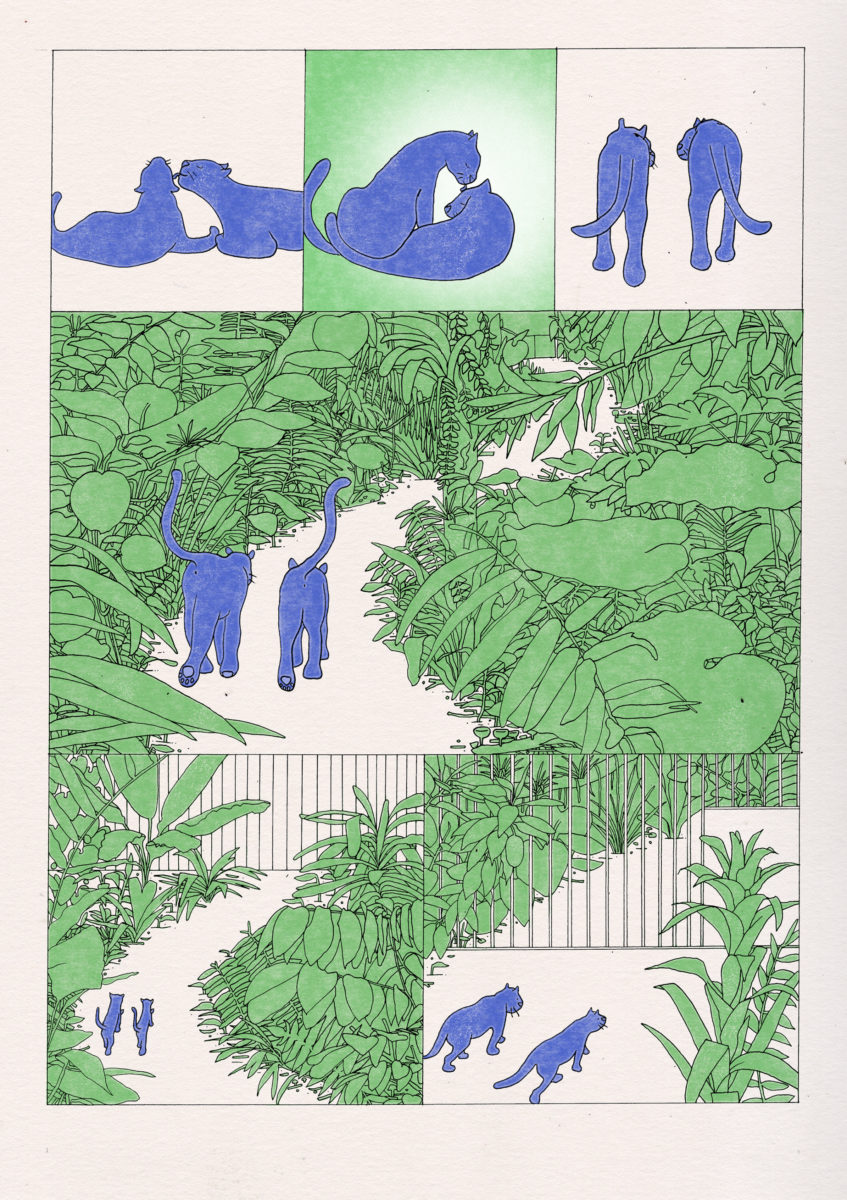
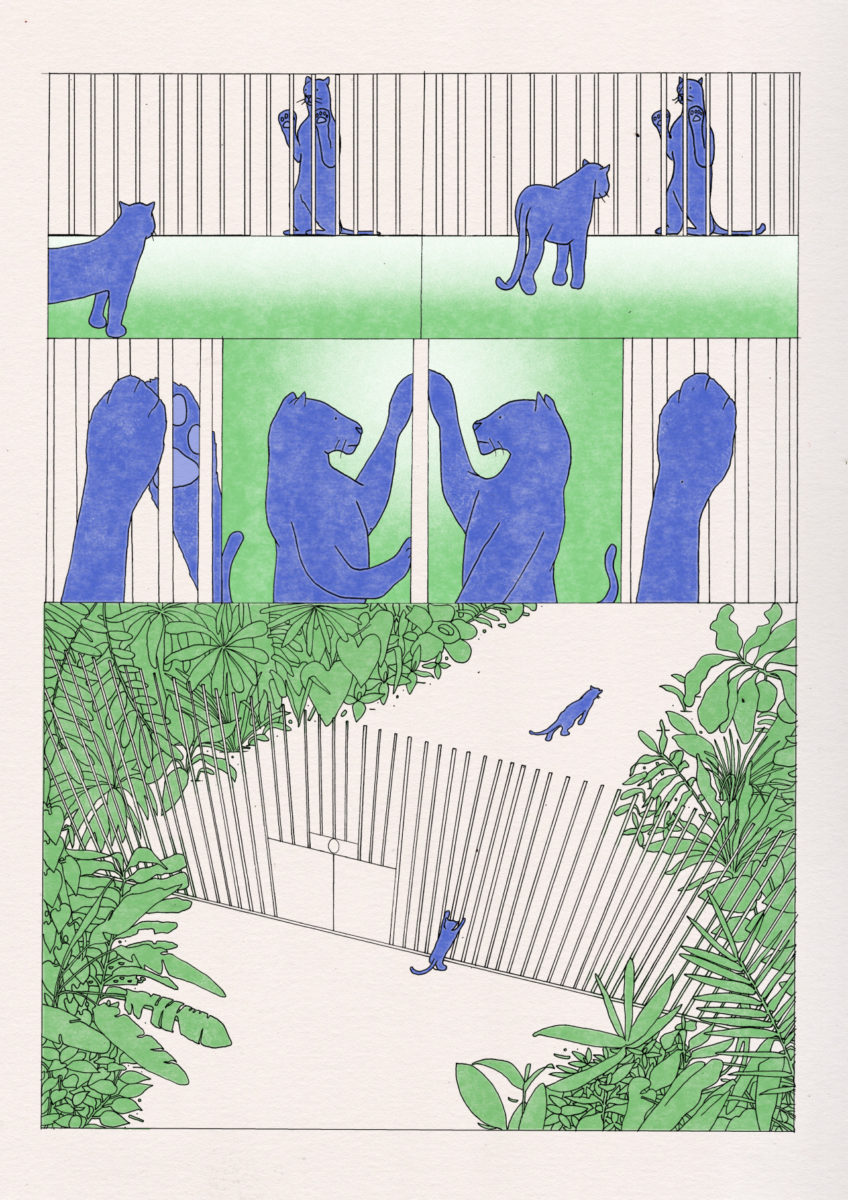
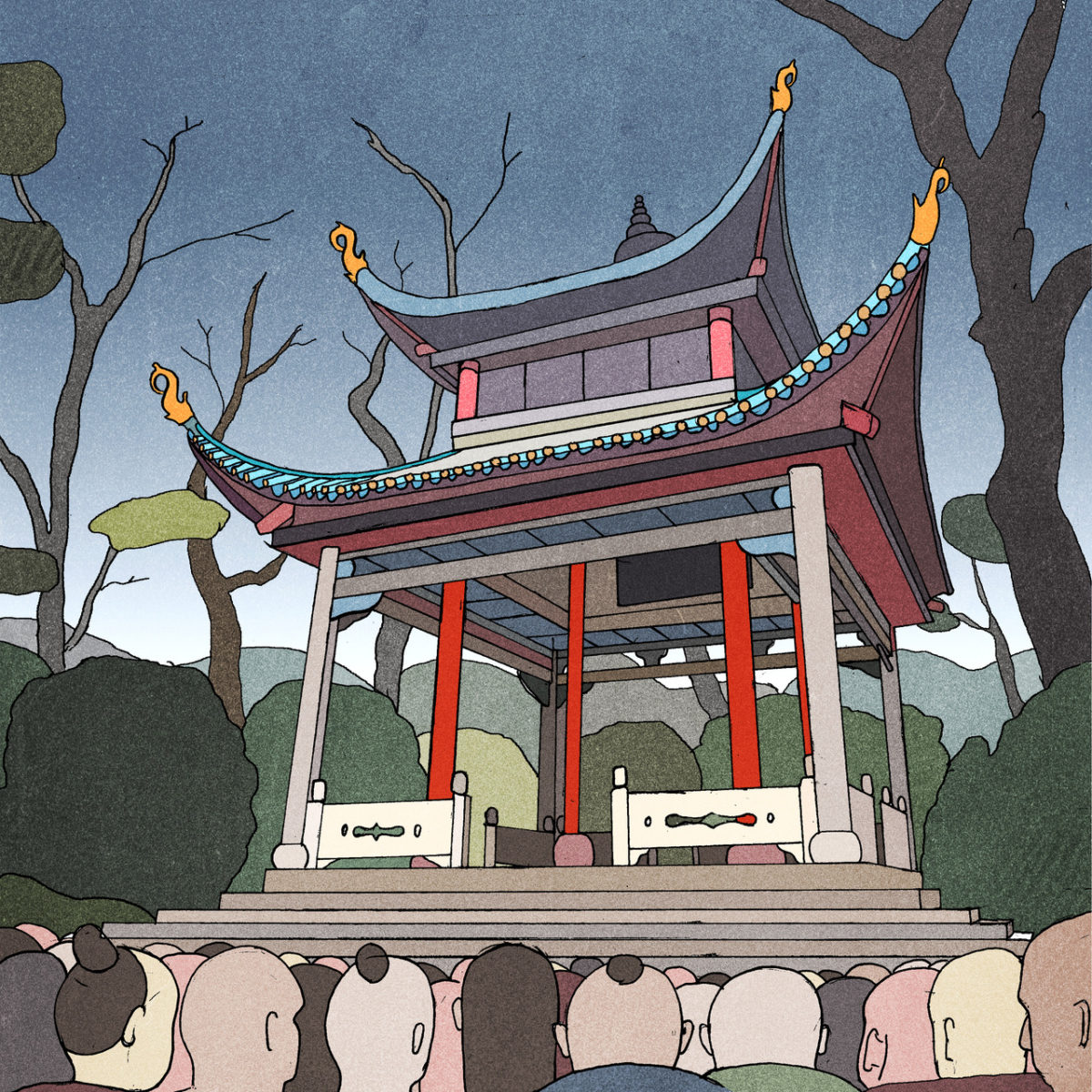
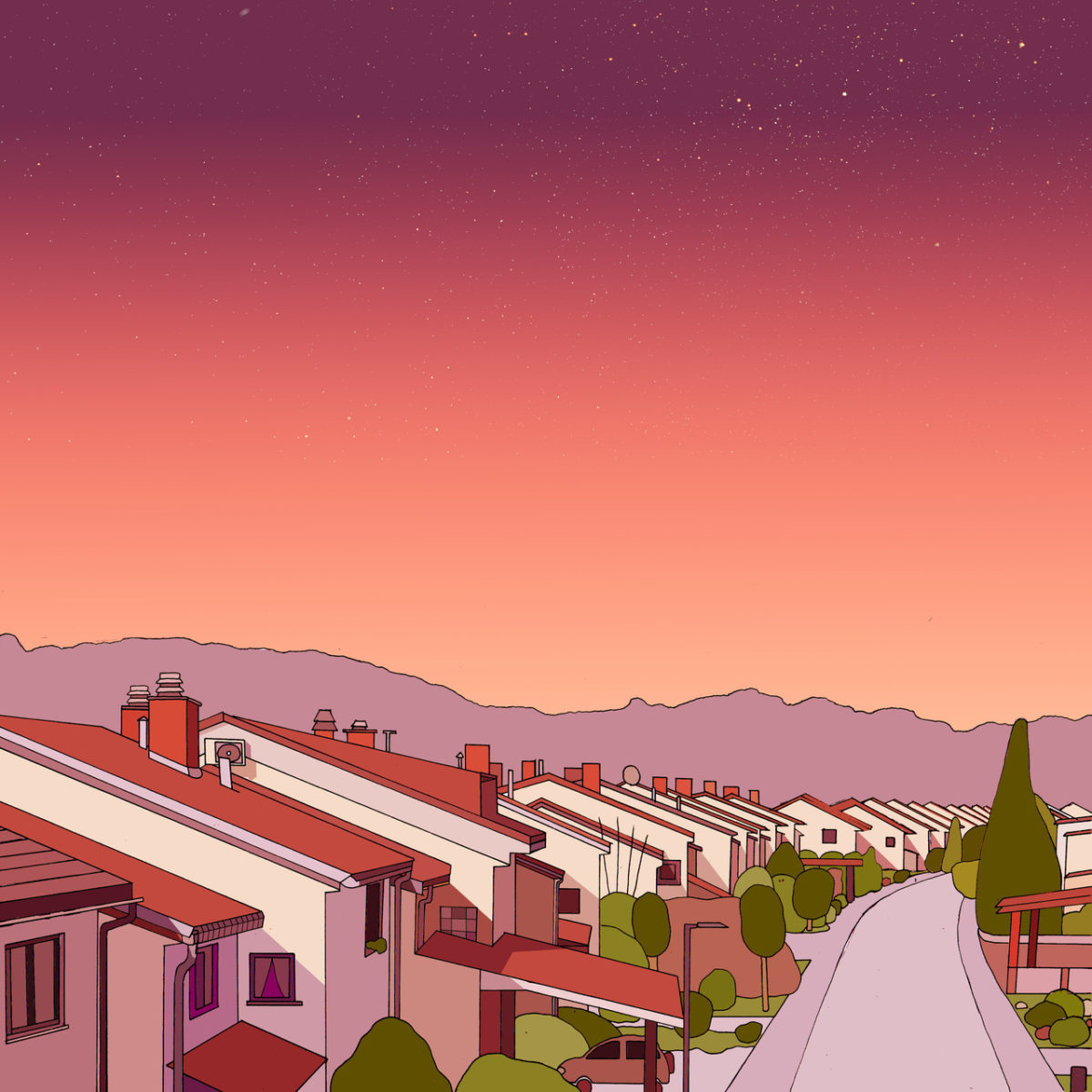
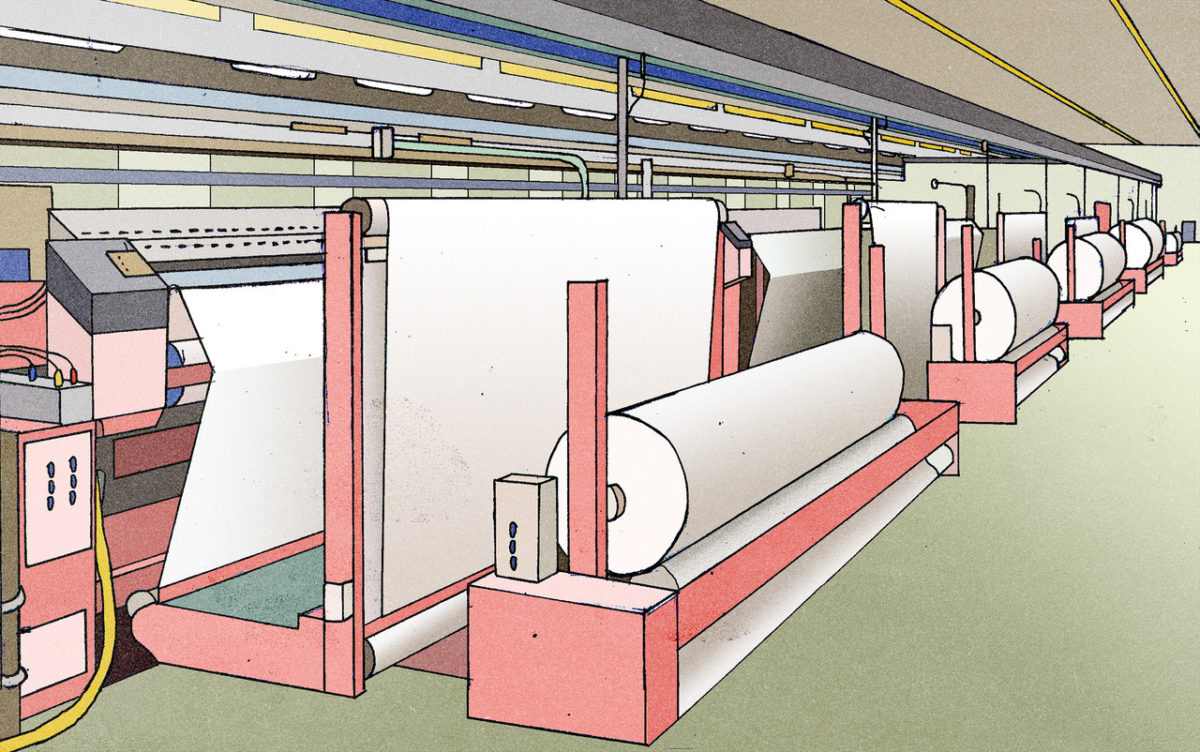
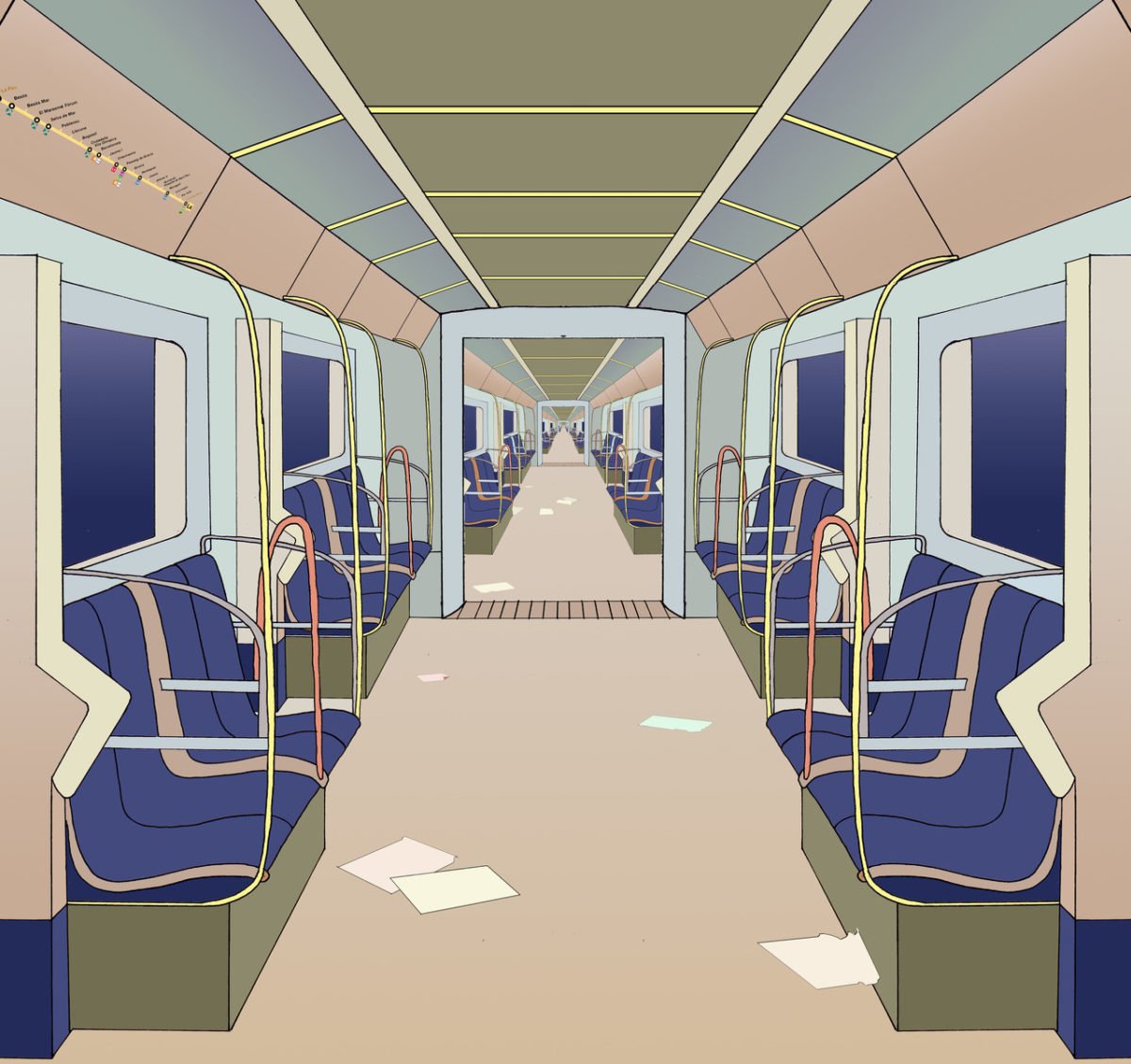
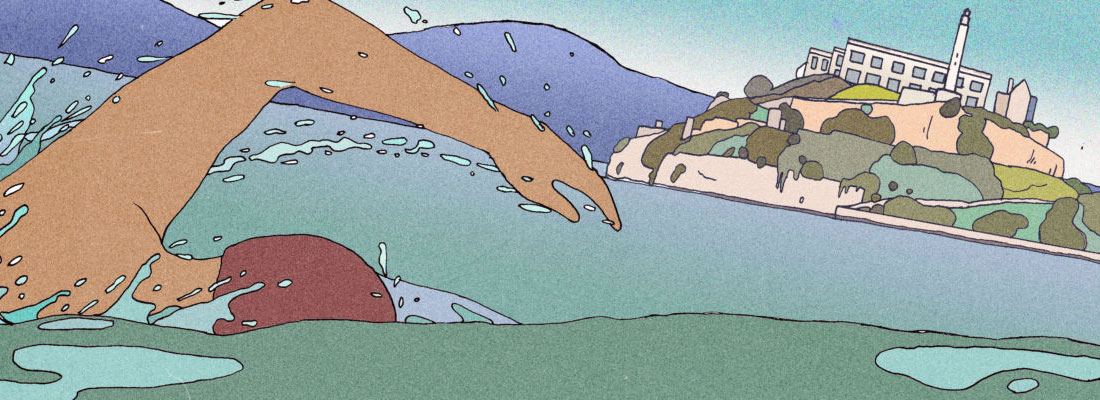
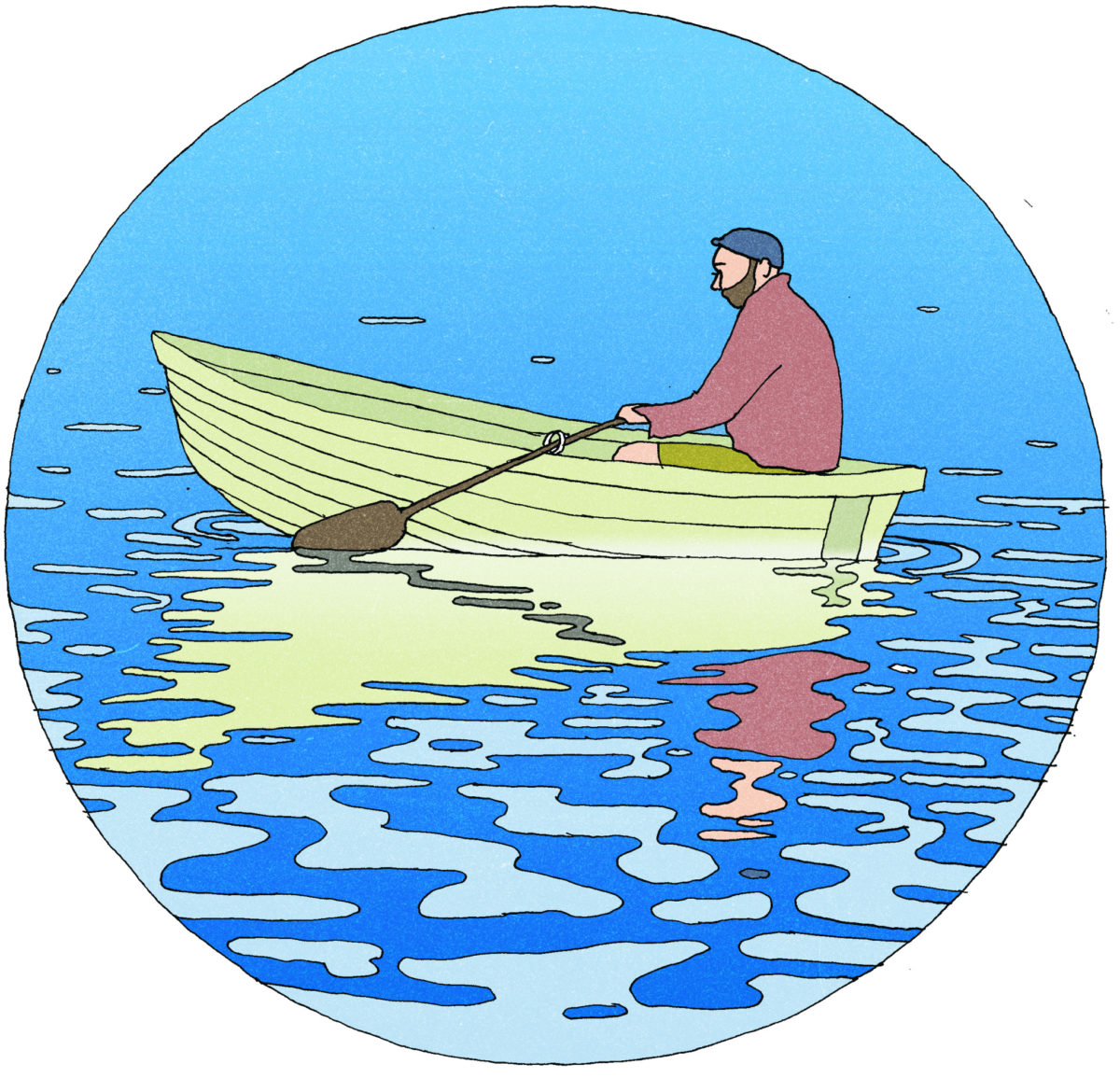
Emma Roulette is a Barcelona-based illustrator and comic artist from Florida. You can follow their work on instagram or visit their website.
